

How to Create a Business Plan for Sheep Farming
If you plan to raise sheep for profit or at least try to break even while raising sheep, one of the most important steps you can take to set yourself up for success is to develop a business plan for sheep farming. A well-considered business plan is an essential part of operating any business, and sheep production is no different.
Your sheep farm plan should include a clear set of goals, a firm grasp of flock management fundamentals, and the marketplace in which you plan to sell your breeding stock, meat, wool, and (if applicable) dairy products.
In this article we’ll cover the basics to help you develop a successful business plan for sheep farming.
Sheep Farm Business Plan Preparation
Putting together a business plan for your sheep farming operation isn’t so different from putting together a plan to launch any other business.

A business plan can help, even if you already have sheep on your property. Even if you have been raising stock for a few years. If you want to start running your farm like a business, creating an organized and informed plan can help. Not only can you get your farm out of the red, making a plan will also help you focus on your primary goals.
The basic components of a business plan for sheep farming may include the following 6 items:
Cover Sheet

Your cover sheet will include the name of your business, your farm’s contact information, and the date the plan was prepared. Even if you don’t plan to apply for a business loan, this is a good way to organize your sheep farm plan and help you take your efforts more seriously.
Executive Summary

This is a top-level summary of your sheep farm business plan, including a short description of your business, your mission statement and the goals you hope to achieve as you execute your business plan.
Business Description

Your business description should be a simple and accurate description of the main components of your business. This includes a short business overview, details about your business location and facilities, ownership of your business, and a short history of your farm.
Production Plan

Your sheep farm production plan will document the products that you will produce, how you will produce those products, and how much you expect to produce. This section should also detail any permits and regulations which may impact your production plan.
Marketing Plan

The marketing plan for your sheep farm should include a short summary of recent market trends, any marketing alliances you have or wish to build, an overview of your primary and secondary marketing strategies, and any competitive advantage your business has.
Financial Plan

Your sheep farm’s financial plan may be the most critical part of your overall business plan. Items you should plan to include in your financial plan are a balance sheet, an income statement, cash flow statement, and your overall farm enterprise budget.
Don’t be Overwhelmed, Find Support!
While it may seem overwhelming, most states and counties have a number of resources to assist you. Creating a well-executed sheep farm business plan doesn’t have to be a lonely endeavor.
Look for your local small business development center, farm service agency, or cooperative extension office for support.
Online Sheep Farming Business Plan Generators
We can also recommend the following online options if you need some assistance.

The University of Minnesota Center for Farm Financial Management has terrific online business planning software called AgPlan which is available for free!
Using this software allows you to not only view your business plan online, you can review examples of other people’s business plans created with AgPlan and also share your business plan with advisors to receive feedback and support.

Purdue University has an online business planner portal called INVenture , which uses a simple question and answer format to help you write a cohesive sheep farming business plan.
We feel that either the University of Minnesota platform, or Purdue’s platform can work if you’re having a hard time getting started on your own, or finding local support.
3 Things Which Can Make or Break Your Sheep Farm Plan
While there are many variables involved when planning and operating a business, some matter more than others. The 3 primary variables you should pay special attention to when creating and executing a sheep farming business plan are:
- feed costs ,
- market prices , and the
- percent lamb crop .
Cost of Feeding Your Flock
As you probably know if you’re considering raising sheep for profit, the cost of feeding your flock will be your primary expense. This is particularly true for the cost of feeding your ewes.
While there are many strategies for determining your annual feed cost, including determining in advance how many sheep per acre your farmland can support , there is no one-size-fits-all solution when it comes to feeding a flock of sheep.
Early on you may have to estimate your annual feed costs. After a few years you will be able to average your historical spending to obtain an accurate cost projection.
Prevailing Market Prices
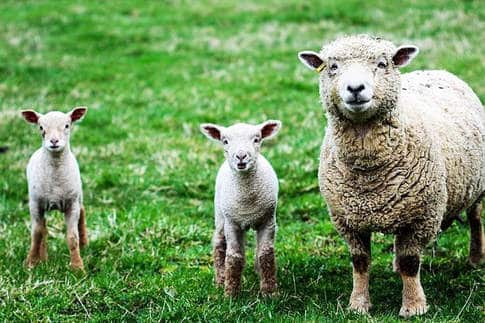
Market prices for your meat, wool, and dairy products can change annually, seasonally, and even week to week.
Higher market prices will increase your profitability, but it’s important to compare “net” market prices.
If you have to sell through a livestock auction there will be extra cost. These businesses often charge a flat fee or a percentage of the sale. So a higher price may not net you as much as if you sold direct to a consumer at a lower price.
In general, if you can sell direct from your farm to commercial buyers or consumers, you can net more per sale. Cutting out the middle man is usually good business.
It’s important to be aware of this when you develop the marketing plan for your sheep farm.
Percent Lamb Crop
Finally, the Percent Lamb Crop in any given year will have a major impact on your profitability. We define this data point as the number of lambs marketed (or retained for breeding) produced by each ewe exposed for breeding.
In general, producing more lambs will net you more profit, as it will typically cost the same amount of money (or close to it) to maintain a ewe, regardless of how many lambs she produces in a year.
A flock of prolific ewes that raise numerous healthy lambs will improve your percent lamb crop and can help make your sheep business more profitable.
For most shepherds, 200% is a realistic goal to set, and most sheep breeds can produce a 200% lamb crop each year if fed and managed properly.
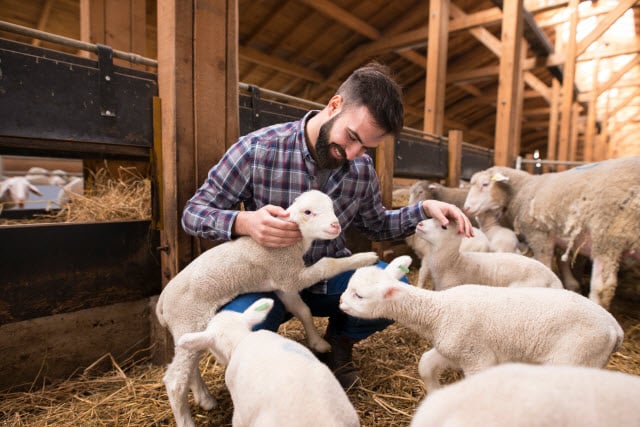
A ewe’s age, weight, nutrition, and genetics can all impact her ability to deliver multiple lambs per year. Most ewes reach their peak productivity between 3 and 6 years of age; something to be aware of as you monitor the age of your flock.
Preparing a Business Plan for Sheep Farming (takeaways)
While raising sheep may not be the most glamorous or lucrative business opportunity, it can be one of the most rewarding, and if you can approach the endeavor from a practical business standpoint, with a thoughtful sheep farm plan, then you’ll have a better chance to succeed.
Raising sheep for profit can be realistic if you pay close attention to your production, financial, and marketing plans, and set a realistic budget. Most importantly – stick to the plan!
You May Also Enjoy:
- Start Business
- Grow Business
How to Start Sheep Farming Business – Complete Guide
- by Next What Business Research Team
- Agro Based , Business Plans
- August 30, 2024
Do you want to start a small sheep farm business with a small investment? If YES, find here a commercial sheep farming business plan guide for your livestock startup.
Raising sheep is indeed a profitable business. Investing little money, any individual can start raising sheep even with other livestock. Generally, sheep farming comes under the animal husbandry segment.
Globally, this is a traditional livestock business . Sheep provide meat, milk, and wool. Even, you can earn money from selling skin and manure also. Apart from the domestic market, the products have good international demand. So, the business has the potential of earning foreign currency also.
Table of Contents
Benefits of Sheep Farming Business
- First of all, you can start the business with a small investment and space. The business doesn’t demand huge capital to start.
- The business requires less labour for daily maintenance and care. Thus, you can run the farm with less working capital investment.
- Sheep give birth to kids frequently. So, you can create a large size herd within a short period.
- Sheep require less space for living. Even you can raise sheep with your other livestock animals.
- Additionally, you don’t need to build expensive housing for the sheep. So, it allows you to maintain your cost early.
- Sheep eat different kinds of plants. So you don’t need to provide high-quality feeds all the time.
- Sheep are very hardy animals. They can adapt to almost all types of environments. So, you can raise sheep in a wide range of temperate climates, including arid zones.
- Finally, the products you get from sheep-like meat, wool, and milk have high demand in the market. So, sheep farming is a commercially lucrative business for entrepreneurs who want to start a livestock business.
Read: How To Get an Agriculture Loan
8 Steps to Start Sheep Farming Business
Step 1: business plan.
Regardless of the size of your sheep farm, you must craft a business plan . Your sheep farming business plan must consist of a financial analysis, marketing strategy, and income revenue calculations. Here is a breakdown of the key components to include in your sheep business plan:
⇒ Executive Summary
Provide an overview of your sheep farming business, including your vision, mission, objectives, and key highlights of the business plan.
⇒ Business Description
Describe your sheep farming operation, including the type of sheep (breeds), the size of your flock, and the products you intend to produce (e.g., wool, meat, milk). Explain the location of your farm, including details about the land, facilities, and infrastructure available for sheep management.
Read: Top Agriculture Software Solutions
⇒ Market Analysis
Conduct a thorough analysis of the sheep farming industry, including market trends, demand for sheep products, and potential competitors in your target market. Identify your target customers and their preferences for sheep products, such as wool quality, meat cuts, or speciality items.
⇒ Marketing and Sales Strategy
Outline your marketing approach to promote your sheep products and attract customers. This may include strategies such as online marketing, farmer’s markets, direct sales, or partnering with local retailers. Define your pricing strategy based on production costs, market demand, and competitor pricing.
⇒ Operational Plan
Detail the day-to-day operations of your sheep farming business, including feeding and nutrition management, breeding programs, health care protocols, and shearing schedules. Describe your management team and their roles in overseeing different aspects of the farm operations.
⇒ Financial Plan
Develop a detailed financial plan that includes startup costs, operational expenses, revenue projections, and profitability analysis. Include a budget for acquiring sheep, purchasing feed and supplies, building infrastructure, hiring labour, and covering other operational expenses. Estimate your expected revenue from sheep products (wool, meat, milk) based on market prices and sales volumes.
⇒ Risk Management
Identify potential risks and challenges associated with sheep farming, such as disease outbreaks, adverse weather conditions, market fluctuations, and regulatory compliance issues. Outline strategies to mitigate these risks, such as implementing biosecurity measures, diversifying product offerings, and maintaining emergency funds.
⇒ Regulatory Compliance
Research and understand the legal and regulatory requirements for sheep farming in your location, including permits, licenses, and animal welfare standards. Ensure compliance with environmental regulations, zoning laws, and food safety standards related to sheep products.
⇒ Exit Strategy
Outline your exit strategy in case you need to sell the farm or transition out of the sheep farming business. Consider factors such as market conditions, asset valuation, and succession planning.
⇒ Appendices
Include any additional information or supporting documents relevant to your sheep farming business plan, such as market research data, resumes of key team members, and supplier agreements.
Step 2: Identify a Location
If you already have a location of your own then it’s good. Otherwise, you will need to identify and select a location for setting up the farm. The area required depends on the size of the farm and the population of the livestock you want to keep on your farm. Set up fencing to secure the grazing area and prevent predators from accessing the flock.
Location plays an important role in the overall success of your sheep farm. Ensure that the space is clean enough and has a clean water resource. Additionally, check the availability of an adequate amount of greens and easy transport facilities. Also, don’t establish the farm in a location that is very far from the local market.
Step 3: Procure Quality Breeds
Procure quality breeds from either trusted breeders or responsible farmers. Generally, you can find numerous sheep breeds throughout the world. However, all those breeds are not suitable for farming in all areas. So, you will need to procure the breeds according to the agroclimatic condition of your location.
Additionally, you will need to select the breed according to the specific demand. Some breeds are suitable for commercial meat production and some breeds are suitable for wool production. So, choose suitable breeds according to your desired production purpose. Some of the most popular sheep breeds are the following:
- Rambouillet
Step 4: Build the Housing
Building the right housing is one of the most important aspects of establishing the sheep farm. You must provide housing that can protect the sheep from adverse climatic situations. You can provide a simple shade to house the sheep.
However, you must construct the shade in an elevated area to prevent water stagnation. Additionally, you can grow fodder trees around the shades and use the space as grazing land. Finally, the entire house must have a sufficient ventilation facility.
For a comfortable house east to west orientation with generous provision for ventilation /air movement to dry the floor is suitable. However, the most suitable is a thatched roof due to its cheaper cost and durability. However, you can also use corrugated asbestos sheets for organized farms to minimize recurring costs and to have longer durability.
Generally, an adult sheep requires about 20 square feet of floor space. For example, if you intend to raise 10 sheep, then you have to make a house with 10 feet long and 20 feet wide. Keep the roof at least 6 feet high from the floor.
Different Shades of Organized Sheep Farm
- General flock shed (Ewe / Doe shed)
- Ram or buck shed
- Lambing or kidding shed
- Lamb or kid shed
- Sick animal shed
- Shearing and storeroom
- Attendant’s room
Step 5: Feeding
You must provide proper feeding for the best result. Additionally, you will need to provide the food according to gender and age. Good-quality hay or stored forage is a highly productive feed for your sheep farm.
The period from weaning to the breeding of ewes is critical if a high twinning rate is desired. Ewes should not be allowed to become excessively fat but should make daily gains from weaning to breeding. During the last 6–8 wk of pregnancy, the growth of the fetus is rapid. This is a critical period nutritionally, particularly for ewes carrying more than one fetus.
Beginning 6–8 wk before lambing, you must increase the plane of nutrition gradually and continue without interruption until after lambing. The amount offered depends on the condition or fat covering of the eyes and the quality of the forage.
If ewes are in fair to good condition, 0.5–0.75 lb (225–350 g) daily is usually sufficient. The roughage content of the ration should provide all the protein required for all nonlactating ewes. If necessary, you can classify the ewes according to age, condition, and number of fetuses and divide them into groups for different treatments.
Step 6: Care and Management
You will need to provide good care and management to get the maximum profitability of your farm. Broadly, you will need to procure quality breeds and provide good housing and food. Additionally, maintain the cleanliness of your farm. In addition to that, provide the right vaccination to your sheep. If you notice any sick sheep, separate the animal promptly, and provide proper treatment.
To obtain the optimum profit, always tap the local market of the products. It helps to keep the transportation cost less. Additionally, always think about the other marketing avenues to get the maximum profits from your sheep farming business.
Step 7: Marketing and Sales
Identify potential markets for sheep products such as wool, meat, and specialty products like dairy sheep milk or artisanal wool products. Develop a marketing strategy to promote your products through farmer’s markets, online platforms, direct sales to consumers, or wholesale to retailers.
Step 8: Record Keeping and Financial Management
Maintain detailed records of flock management, breeding records, health treatments, and financial transactions. Monitor expenses and revenues to assess the profitability of the sheep farming business and make informed management decisions.
Discover more from NextWhatBusiness
Subscribe to get the latest posts sent to your email.
Type your email…

Sheep Farming Business Plan: Definitive Guide

Table of Contents
What you need in your sheep farming business plan
Here are some basic components of a sheep farming business plan:
- Cover sheet : The front page of your business plan. This gives an overview of what the rest of the pages will present.
- Executive summary : This gives a more detailed overview than the cover sheet, highlighting the most pertinent parts of your business plan.
- Business description : Describes what your business is, who it caters to, and the types of services you offer.
- Production plan : Contains the resources, approaches, and techniques you need to use to end up with the products you will eventually offer to your market.
- Marketing plan : This describes your target market, the communication channels where you can find them, and techniques to start engaging with them and promoting your product or service.
- Financial plan : This contains the monetary aspects of the business, such as your overall budget, the breakdown of your budget, and your goals to reach your target income.
- SWOT Analysis : It documents your and your business’s strengths, weaknesses, opportunities, and threats .
- Job Roles and Responsibilities : This outlines the roles to be filled in your business. How many people will it take to run your operation? What will their roles be?
Sheep farming business plan template

Below are a selection of farming business plan templates that you can use to inspire your own business plan:
- Farming Business Plan (government of Wales)
- Strategic Business Guide (Beef + Lamb, New Zealand)
- Small Farm Business Plan (Oregon State University)
- Sheep & Goat Farm Business Plan (Farmers’ Marketing Institute)
Questions to ask as you create your business plan
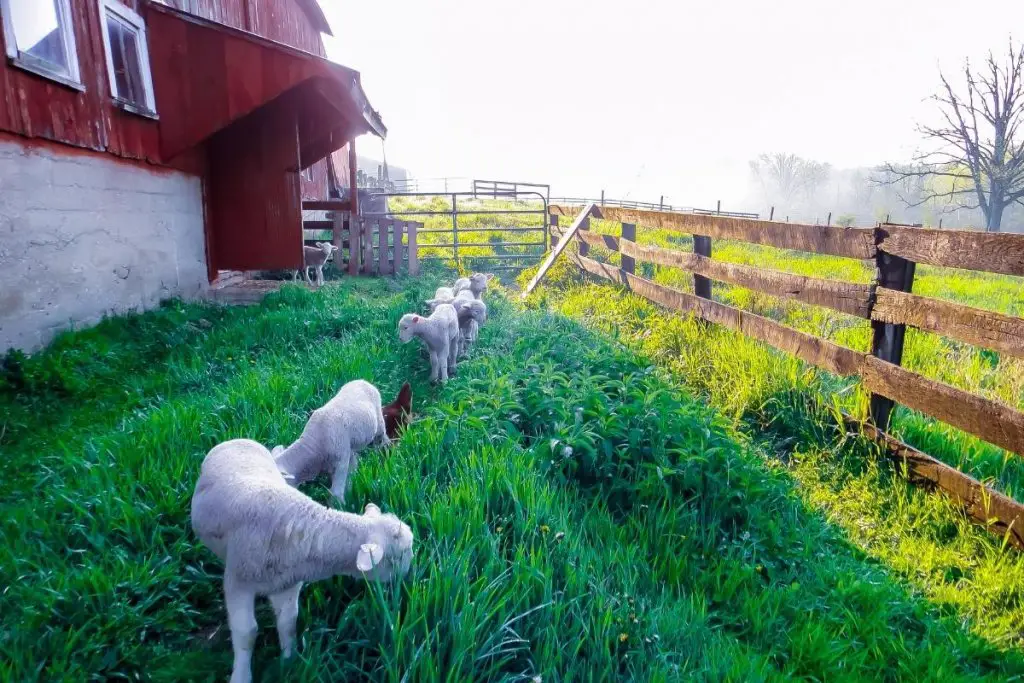
Here are some questions to ask yourself to give your sheep farm the best chance of success you possibly can:
- Start by deciding how big you envision your sheep farm. Is this a hobby farm (small-scale) or a larger business?
- How many sheep do you plan to have?
- Are there any restrictions on what kind of sheep you can raise? Do you need to abide by certain state or federal regulations?
- Is this a family farm? If not, how many employees do you plan to have?
- How much land do you already have? Do you need to acquire more land?
- Which type of farm will best suit your needs and goals?
- What are your goals?
- What are challenges will you face as a sheep farmer?
- What are your strengths and weaknesses?
- Where do you see yourself in five years?
- What assets do you have now that can help you with your business?
- What kind of facilities do you have now?
- How much money do you have set aside for this project right now?
- How will you manage labor and equipment costs?
- What kind of market research have you done on the local sheep industry in your area?
- Who is your target market?
- Are there any laws or regulations that may affect or restrict what can be done on a sheep farm in the area where you intend to do business (such as zoning laws)?
Designing a profitable sheep farm
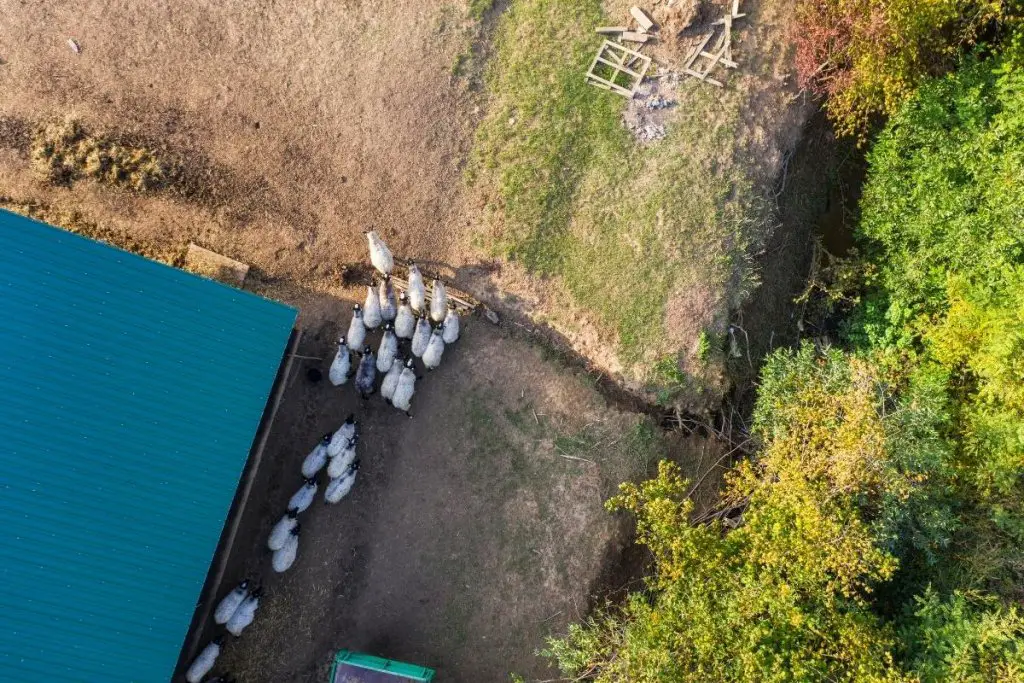
If you want to make your farm as profitable as possible, make sure to consider the below points carefully:
- Pick your primary commodity : What sheep products do you want to sell? Are you producing meat, milk, wool, or all three? Meat tends to be the most profitable.
- Choose your preferred breed of sheep : Some breeds of sheep are more profitable than others. If you’re raising meat sheep, for example, you’ll likely want a hair sheep that puts on weight quickly and is as low-maintenance as possible. The Dorper, Katahdin, and the American Blackbelly are generally recognized as relatively profitable, low-maintenance breeds.
- Manage your sheep’s nutrition : Remember, your sheep are your livelihood. What they eat impacts the quality of the final product. Make sure they get the nutrition they need.
- Prepare ahead : Don’t be caught off-guard for predictable events like changes in weather or lambing season. Avoid costly mistakes by preparing in advance.
Startup budget for a sheep farm
Part of your business plan should cover the rough numbers involved in getting your business going.
This is particular to each business, but a few large capital expenditures universal to sheep farmers are:
- The cost of your sheep (for a rough number, assume around $400 per sheep)
- The cost of your sheep barn or sheep shed, as well as the fencing on your property. Sheep fencing will be one of your largest startup costs, especially if your property is big.
- Other startup costs include sheep shearing equipment, milking equipment, basic veterinary care equipment, and sheep drench.
Joanne is a nocturnal person who loves traveling and coffee. She’s also an animal lover (and rescuer) who makes it a point to befriend every animal she meets. Her passion for learning led her to writing about various topics. As someone who dreams of becoming an “animal whisperer,” she aims to continue learning about animals–particularly sheep, and at the same time, share her knowledge here at Sheep Caretaker.
Recent Posts
Enterotoxemia In Sheep Explained
Enterotoxemia in sheep, also known as overeating disease, causes sheep to be lethargic and stop eating, among other symptoms. A change in diet often triggers it—for example, an increase in grain...
Hairy Sheep Breeds: All You Need To Know
While the stereotypical sheep is white and woolly, some of the largest commercial sheep operations in the world use hairy sheep instead of wooly sheep. Hair breeds, including the Royal White,...
Need a consultation? Call now:
Talk to our experts:
- Business Plan for Investors
- Bank/SBA Business Plan
- Operational/Strategic Planning
- E1 Treaty Trader Visa
- E2 Treaty Investor Visa
- Innovator Founder Visa
- UK Start-Up Visa
- UK Expansion Worker Visa
- Manitoba MPNP Visa
- Start-Up Visa
- Nova Scotia NSNP Visa
- British Columbia BC PNP Visa
- Self-Employed Visa
- OINP Entrepreneur Stream
- LMIA Owner Operator
- ICT Work Permit
- LMIA Mobility Program – C11 Entrepreneur
- USMCA (ex-NAFTA)
- Franchise Business Planning
- Landlord Business Plan
- Nonprofit Start-Up Business Plan
- USDA Business Plan
- Online Boutique
- Mobile Application
- Food Delivery
- Real Estate
- Business Continuity Plan
- Buy Side Due Diligence Services
- ICO whitepaper
- ICO consulting services
- Confidential Information Memorandum
- Private Placement Memorandum
- Feasibility study
- Fractional CFO
- How it works
- Business Plan Templates
Business Plan for Sheep Farming
Published Jul.02, 2024
Updated Jul.03, 2024
By: Cynthia Turner
Average rating 5 / 5. Vote count: 2
No votes so far! Be the first to rate this post.

Table of Content
Sheep farming is a versatile and potentially profitable agricultural venture, offering multiple revenue streams through meat, wool, and dairy products. Crafting a comprehensive business plan for sheep farming is essential for setting clear objectives, securing financing, and ensuring efficient farm management. This guide provides a detailed roadmap for developing a robust business plan for sheep farming, covering key components such as market analysis, operational strategies, financial planning, and more.
Understanding Sheep Farming
Sheep farming involves raising and breeding sheep for various purposes, including meat (lamb and mutton), wool, and milk production. It is a versatile agricultural activity that can be tailored to different climates and geographical areas, making it viable in many parts of the world, including South Africa. Understanding the nuances of sheep farming, such as breed selection, grazing management, and health care, is crucial for running a successful operation.
Market Evaluation
Before diving into the specifics of your business plan, it is essential to conduct a thorough market evaluation. This involves understanding market dynamics, customer needs, and the competitive landscape, which will help you make informed decisions and identify growth opportunities.
Insights into the Sheep Farming Industry
The sheep farming industry is a vital part of the global agricultural sector. According to the Food and Agriculture Organization (FAO) , sheep meat production has been steadily increasing, driven by rising demand in regions such as Asia and the Middle East. Additionally, wool and dairy products from sheep contribute significantly to the global economy. In South Africa, sheep farming is particularly prominent due to favorable climatic conditions and a strong tradition of livestock farming.
Benefits of Writing a Business Plan for Sheep Farmers
Writing a business plan offers numerous benefits for sheep farmers. It provides a clear roadmap for your business, helping you set realistic goals, allocate resources effectively, and track progress. A well-structured business plan can also attract investors and lenders by demonstrating that you have a viable business idea and a solid strategy for achieving success. Additionally, it can help you identify potential challenges and develop contingency plans to address them.
Key Components of a Business Plan for Sheep Farming
A comprehensive business plan for sheep farming should include the following key components:
Executive Summary
The executive summary is a concise overview of your business plan, highlighting the main points and objectives. It should provide a snapshot of your farm, including your mission statement, product offerings, target market, and financial goals. Although it appears first in the business plan, it is often written last, after you have detailed all other sections.
Business Description
The business description provides an in-depth look at your sheep farming operation. Describe your farm, including its location, size, and the types of sheep you plan to raise. Explain what makes your farm unique and how it addresses a specific need or gap in the market. Include details about your business structure, such as your legal name, form of ownership, and any relevant licenses or permits.
Market Analysis
Conducting a market analysis involves researching your industry, target market, and competitors. Identify your target market’s demographics, preferences, and buying behavior. Analyze industry trends and growth projections, and assess the competitive landscape by identifying your main competitors, their strengths and weaknesses, and your competitive advantage.
Organization and Management
Describe your farm’s organizational structure, including the roles and responsibilities of each team member. As a sole proprietor or farm manager, outline your management strategy and any plans for hiring employees or working with contractors. Detail the qualifications and experience of key personnel and any advisory board members who provide guidance and support.
Products and Services
Provide a detailed description of the products and services you offer. Explain the benefits and features of each product, such as lamb, mutton, wool, or dairy products. Highlight what sets your products apart from competitors and any plans for future expansions or new product lines.
Marketing and Sales Strategy
Your marketing and sales strategy outlines how you plan to attract and retain customers. Describe your pricing strategy, promotional activities, and sales tactics. Discuss your brand positioning, target audience, and marketing channels you will use to reach your customers. Include details about your sales process, customer service approach, and any plans for loyalty programs or referral incentives.
Financial Projections
Financial projections are a crucial part of your business plan, providing a forecast of your farm’s financial performance. Include projected income statements, cash flow statements, and balance sheets for at least the next three to five years. Provide a break-even analysis to determine when your farm will become profitable. Discuss any funding requirements, potential sources of financing, and your strategy for managing expenses and revenue growth.
Sample Business Plan for Sheep Farming
To help you get started, here is a sample outline of a business plan for sheep farming:
- Brief overview of the farm
- Mission statement
- Key products or services
- Target market
- Financial goals
- Farm name and location
- Description of sheep breeds
- Unique value proposition
- Industry overview
- Target market demographics
- Competitive analysis
- Management roles and responsibilities
- Organizational structure
- Detailed description of products
- Benefits and features
- Plans for future offerings
- Pricing strategy
- Promotional activities
- Sales tactics
- Projected income statements
- Cash flow statements
- Balance sheets
- Break-even analysis
- Funding requirements
Prepared Business Plan for Sheep Farming
If you prefer a more detailed and professionally prepared business plan, there are resources available online. A prepared business plan for sheep farming typically includes all the components mentioned above, along with specific details tailored to your farm’s unique needs. For example, the Food and Agriculture Organization (FAO) provides various resources and guidelines that can help you structure your business plan effectively.
How to Start a Sheep Farming Business
Starting a sheep farming business involves several critical steps:
- Conduct Feasibility Study : Assess the viability of sheep farming in your chosen location, considering factors like climate, soil quality, and market demand.
- Choose the Right Breed : Select sheep breeds that are well-suited to your region and align with your business goals, whether for meat, wool, or dairy.
- Develop Infrastructure : Set up necessary infrastructure, including fencing, shelters, and grazing areas, ensuring they meet the needs of your flock.
- Acquire Initial Stock : Purchase healthy breeding stock from reputable sources, ensuring they meet your breed and production criteria.
- Implement Health Management Plan : Establish a comprehensive health management plan, including vaccination, deworming, and regular veterinary check-ups.
- Develop Feeding Program : Create a balanced feeding program that meets the nutritional needs of your sheep at different stages of growth and production.
- Hire Skilled Labor : Employ skilled labor or train workers to assist with daily farm operations, ensuring they are knowledgeable about sheep care and management.
Sheep Farming Costs
Understanding the costs associated with sheep farming is crucial for financial planning. Major costs include purchasing breeding stock, feed, healthcare, infrastructure development, and labor. Additionally, there are ongoing operational expenses such as utilities, maintenance, and marketing.
To ensure profitability, it’s essential to manage these costs effectively and identify areas where you can optimize efficiency.
Sheep Farming Profit
Sheep farming can be a profitable venture if managed correctly. Profitability depends on factors such as breed selection, management practices, market demand, and cost control. Diversifying your revenue streams by selling meat, wool, and dairy products can enhance profitability. Regularly monitoring financial performance and adjusting your strategies based on market conditions will help you achieve sustainable growth.
A well-crafted business plan is essential for the success of a sheep farming venture. It serves as a roadmap for your farm, helping you set clear goals, attract investors, and manage your operations effectively. By conducting thorough market research, defining your business structure, and developing detailed financial projections, you can create a robust business plan that positions your sheep farming operation for long-term success.
Get Started with OGS Capital Today
Ready to take the next step in your business journey? Start developing your business plan today to set a clear path for your sheep farming venture. Use resources like the Food and Agriculture Organization (FAO), USDA National Agricultural Statistics Service (NASS), and Allied Market Research to gather valuable data and insights. For professional guidance and a customized business plan, get started with OGS Capital today. Your dedication to planning and preparation will lay the foundation for your business’s success. Start now and turn your farming dreams into reality!
Frequently Asked Questions
How to be a successful sheep farmer?
To be a successful sheep farmer, focus on selecting the right breeds for your market and environment, maintaining high standards of animal health through regular veterinary care, and implementing efficient feeding and breeding programs. Stay informed about market trends and pricing, manage your finances carefully, and continually educate yourself on best farming practices. Building strong relationships with suppliers and customers also contributes to long-term success.
How many sheep do you need to start a farm?
The number of sheep needed to start a farm varies, but starting with 20-50 ewes is often recommended. This allows for manageable herd sizes and sufficient production to meet market demands while providing the opportunity to learn and refine your farming practices without being overwhelmed by scale. As you gain experience and understand your resources better, you can gradually expand your flock.
OGSCapital’s team has assisted thousands of entrepreneurs with top-rate business plan development, consultancy and analysis. They’ve helped thousands of SME owners secure more than $1.5 billion in funding, and they can do the same for you.

Bowling Alley Business Plan Sample

Nightclub Business Plan (2024): A Comprehensive Guide

Rabbit Farming Business Plan

Beverages Business Plan

Private Schools Business Plan

Business Plan for a Lounge

Any questions? Get in Touch!
We have been mentioned in the press:
Leave a Reply Cancel reply
Your email address will not be published. Required fields are marked *
Save my name, email, and website in this browser for the next time I comment.
Search the site:
How to Start a Successful Sheep Farm Business: 9 Steps to Follow

5-Year Excel
MAC & PC Compatible
Immediate Download
Related Blogs
- Effective Ways to Boost Profitability in Sheep Farming
- Essential Startup Costs for a New Sheep Farm
- Top 7 KPIs for Your Sheep Farming Business
- What Are the Key Operating Costs for Sheep Farming?
- Essential Steps for Planning a Sheep Farm: Business Checklist for Success
Are you dreaming of starting your own sheep farm but feel overwhelmed by the thought of jumping in with no experience or funds? Fear not! In just 9 actionable steps , you can transform this dream into a thriving business. From crafting a compelling business plan to finding the right land, our comprehensive checklist will guide you through the essential phases of launching your sheep farming venture. Ready to get started? Explore the complete guide and access your tailored business plan at this link !
How Do I Open A Sheep Farm Company With No Experience?
Starting a sheep farm business without prior experience may seem daunting, but with the right approach, it can be a rewarding venture. The key is to leverage available resources and build a solid foundation for your farm. Here are some essential steps to consider:
- Educate Yourself: Before diving into sheep farming, take the time to learn about sheep farming techniques , breed selection, and farm management practices. Numerous online courses and local workshops can provide valuable insights.
- Join a Community: Engage with the sheep farming community through forums and social media groups. Networking with experienced farmers can provide practical advice and mentorship opportunities.
- Start Small: Consider beginning with a small flock to minimize initial risks. This allows you to learn the ropes of raising sheep for profit without overwhelming yourself.
- Develop a Business Plan: A well-structured sheep farm business plan is crucial. Outline your goals, operational strategies, and financial projections to guide your decisions and attract potential investors.
- Research Funding Options: Look for grants, loans, or community funding initiatives specific to agriculture. Understanding sheep farming costs and budgeting effectively will be vital for securing financial support.
- Utilize Technology: Implement technology for sheep farm management to streamline operations, track expenses, and monitor flock health. This can significantly enhance efficiency and productivity.
- Establish Local Partnerships: Build relationships with local suppliers and markets to ensure a steady supply of quality feed and other resources while creating a customer base for your products.
Tips for Success
- Visit local sheep farms to gain hands-on experience and observe best practices.
- Consider joining agricultural organizations that focus on sustainable farming to stay informed about industry trends.
By taking these steps, you can successfully launch a sheep farm and establish a business that aligns with the growing demand for sustainable and ethically sourced products. Remember, patience and persistence are key as you navigate the challenges of starting a new venture in the sheep farming industry.
How Do I Start A Sheep Farm Company With No Money?
Starting a sheep farm business with no money may seem like an impossible task, but with creativity and resourcefulness, it can be achieved. Here are essential steps and strategies to consider if you’re aiming to launch a sheep farm without upfront capital:
- Leverage Existing Resources: Begin by assessing what you already have. Perhaps you have access to land, tools, or equipment that can be used for sheep farming . Utilizing these resources significantly reduces initial costs.
- Community Support: Engage with the sheep farming community . Networking with local farmers can provide mentorship, resources, and sometimes even partnerships that allow you to share costs and labor.
- Consider Grazing Leases: Instead of purchasing land, look for grazing leases where you can rent pasture for your sheep. This lowers the burden of land requirements for sheep farming while still allowing you to start raising sheep.
- Join Cooperative Programs: Participating in cooperative sheep farming groups can give you access to shared resources, bulk purchasing of supplies, and joint marketing efforts, reducing sheep farming costs .
- Seek Grants and Subsidies: Research government grants and subsidies available for farmers. Countries often provide funding for sustainable and ethical farming practices, which fits the aim of your farm.
- Start Small: Focus on a small, manageable flock to minimize initial investment. You can raise 5-10 sheep to begin with, gradually expanding as revenue increases. This approach allows you to learn the sheep farming techniques without overwhelming financial risk.
- Crowdfunding: Launch a crowdfunding campaign that emphasizes your sustainable mission. Platforms like Kickstarter or GoFundMe can help raise funds for your farm while building a customer base eager to support ethical farming .
- Work For Others: Gain experience and save money by working for established sheep farmers. This will help you learn the ins and outs of sheep farm management while earning a wage to invest in your future business.
Starting a sheep farm business with no money is challenging but feasible. By leveraging community resources, seeking assistance, and adopting a strategic approach, you can create a successful foundation for your sheep farm. For a detailed look at sheep farming costs and budgeting, check out this resource on sheep farming metrics here .
Tips for Starting a Sheep Farm on a Budget
- Start with hardy sheep breeds that require less maintenance and are more cost-effective.
- Implement sustainable practices early to minimize waste and reduce long-term costs.
- Utilize digital marketing strategies to reach potential customers without high overhead expenses.
Example Of Checklist For Opening A Sheep Farm Company
Starting a sheep farm business can be a rewarding venture, especially with the growing demand for sustainable and ethically sourced products. To help you navigate the process, here’s a comprehensive checklist for launching your sheep farm:
- Research Sustainable Farming Practices : Investigate various sustainable sheep farming techniques to ensure environmentally friendly practices.
- Develop A Business Model : Focus on ethical farming to attract modern consumers who value responsibility.
- Create A Marketing Strategy : Tailor your strategy to target consumers interested in sustainable agriculture and quality products.
- Identify Suitable Land : Ensure the land meets land requirements for sheep farming , including accessibility to water and feed. A minimum of 1 to 5 acres is typically recommended for small flocks.
- Source Quality Sheep Breeds : Choose sheep breeds known for profitability and adaptability to your environment, such as Merino or Suffolk .
- Establish A Budget : Outline startup costs including land, equipment, and initial flock purchases. Sheep farming costs can range from approximately $200 to $500 per sheep, depending on the breed.
- Build Relationships : Connect with local suppliers for feed and equipment and establish contacts in the sheep farming community for support.
- Implement Technology : Utilize technology for sheep farm management to streamline operations and improve efficiency.
- Launch A Brand : Develop a brand identity that reflects your commitment to sustainability and quality, which can differentiate your business in a competitive market.
Tips for Starting Sheep Farming
- Consider joining a local sheep farming association for networking and mentorship opportunities.
- Stay updated on industry trends and market demands through online resources and communities.
By following this sheep farming checklist , you can set a solid foundation for your sheep farm business, ensuring all critical elements are accounted for as you embark on your journey in sheep farming.
| Sheep Farm Business Plan ADD TO CART |
How Long Does It Take To Start A Sheep Farm Company?
Starting a sheep farm business is an exciting venture that requires careful planning and execution. The timeline for launching a sheep farm can vary significantly based on several factors, including land acquisition, sheep breed selection, and farm management techniques. Generally, the process can take anywhere from 6 months to 2 years to see the farm fully operational.
Here are some benchmarks to help guide your timeline:
- Research and Planning: 1-3 months are typically needed to conduct market research, develop a sheep farming business plan, and outline sustainable sheep farming practices.
- Land Acquisition: Finding and securing suitable land can take 2-6 months , especially if you are looking for specific land requirements for sheep farming.
- Infrastructure Setup: Construction of necessary facilities and fencing can take an additional 1-3 months , depending on the scale of your sheep farming operation.
- Sheep Breed Selection and Purchasing: Once infrastructure is in place, sourcing and acquiring quality sheep breeds may take 1-2 months .
- Farm Management Implementation: Implementing sheep farm management practices and training staff can take up to 2 months .
- Marketing Launch: Preparing and executing your marketing strategy can happen concurrently, but actual market entry may take 1 month .
In total, launching your sheep farm business could be realistically achieved in about 6-12 months if everything goes smoothly. For those looking at a more extensive setup with advanced technology for efficient farm management, the timeline could stretch up to 2 years .
Tips for Speeding Up Your Launch
- Streamline your research process by leveraging online resources, forums, and sheep farming communities.
- Consider purchasing land that already has some necessary infrastructure to reduce setup time.
- Network with local sheep farmers to expedite breed selection and purchasing options.
Keep in mind that while speed is important, taking the time to ensure that all elements are well-planned will lead to a more sustainable and profitable sheep farm. Always consult resources such as this guide on creating a sheep farming business plan to help refine your strategy and implementation timeline.
How Can I Find Investors For Starting A Sheep Farm Company?
Finding investors for your sheep farm business, such as Green Pastures Sheep Farm , requires a strategic approach that aligns with the growing demand for sustainable sheep farming practices. Here are several actionable steps to attract the right investors:
- Develop a Comprehensive Business Plan: Create a sheep farming business plan that clearly outlines your vision, mission, and operational strategies. Investors appreciate detailed plans that cover financial projections , market analysis, and risk assessments.
- Network Within the Farming Community: Engage with local agricultural associations or join sheep farming communities . Networking can lead to connections with individuals who may be interested in investing in your venture.
- Utilize Online Crowdfunding Platforms: Websites like Kickstarter or Indiegogo allow you to present your sheep farm idea to a broader audience. A successful campaign can raise significant capital while also building your brand.
- Seek Grants and Subsidies: Research government programs or grants aimed at supporting sustainable farming initiatives. For instance, the USDA offers various funding options for starting a sheep farm .
- Join Angel Investor Networks: Angel investors often seek sustainable and community-oriented projects. Present your business idea to these networks, emphasizing the ethical practices of your sheep farming business.
- Leverage Social Media and Online Presence: Establish a strong online presence to showcase your farm's goals, practices, and products. Engaging potential investors through platforms like LinkedIn can open doors to funding opportunities.
- Attend Agricultural Conferences: Participate in industry-related events to meet potential investors and share your vision. Demonstrating your commitment to ethical farming and sustainability can resonate well with interested parties.
Tips for Attracting Investors
- Prepare a concise elevator pitch that clearly articulates your farm's unique selling proposition and potential for profit.
- Highlight the increasing consumer demand for responsibly sourced products , supporting your pitch with market statistics, such as the 20% annual growth rate in organic and sustainable product purchases.
- Maintain transparency regarding sheep farming costs and potential returns on investment to build trust with prospective investors.
As you pursue these strategies, remember to focus on the unique aspects of your business. Highlight how Green Pastures Sheep Farm will utilize modern sheep farming techniques , embrace technology for efficient farm management , and create a brand that resonates with the values of today’s consumers.
How Do I Create A Successful Business Plan For A Sheep Farm Company?
Creating a successful business plan for your sheep farm is crucial, especially if you're looking to launch a sheep farm that centers on sustainability and innovative practices. Your plan must outline your vision, operational strategies, and financial projections to attract investors and guide your launch. Here are the key components to include in your sheep farm business plan :
1. Executive Summary
This section should provide a brief overview of your business concept. Highlight your focus on sustainable sheep farming and how your farm, Green Pastures Sheep Farm , aims to meet modern consumer demands.
Detail your mission, the structure of your sheep farm business, and the unique aspects that differentiate it from competitors. Emphasize ethical practices and quality products to resonate with today's consumers.
3. Market Analysis
Conduct thorough research on the local and national market for sheep farming. Identify trends, potential challenges, and opportunities. For instance, the demand for responsibly sourced products has increased by 20% in recent years, making it a prime time to start sheep farming.
Outline how you plan to attract customers. This might include a digital marketing strategy, partnerships with local markets, and participation in sheep farming community events. Leverage sheep farming marketing strategies to reach environmentally conscious consumers.
5. Financial Plan
Draft a detailed budget that covers all sheep farming costs , including land acquisition, livestock, feed, veterinary services, and technology for sheep farm management . Consider potential funding options and include projected income statements and cash flow analyses to showcase your farm’s financial viability.
Explain your operational procedures, including breed selection, grazing strategies, and sustainable practices. Discuss how you will implement technology for sheep farm management to optimize productivity.
7. Appendix
Include additional documents such as permits, maps of your planned farming area, and any agreements with suppliers or local markets.
Tips for a Compelling Business Plan
- Use real data and benchmarks to back up your claims. For instance, reference industry statistics regarding sheep farming profitability.
- Seek feedback from experienced sheep farmers or mentors before finalizing your plan.
By following these guidelines, you can develop a robust business plan that not only attracts investors but also sets a strong foundation for your sustainable sheep farm business. Remember, a well-crafted plan is essential for your success in starting a sheep farm that thrives in today's market.
Checklist For Opening A Sheep Farm Company
Starting a sheep farm business can be a rewarding venture, especially with a focus on sustainability and ethical practices, as seen in the vision of Green Pastures Sheep Farm . Below is a comprehensive sheep farming checklist to guide you through the essential steps needed to launch your sheep farm:
Research Sustainable Farming Practices And Technologies
Understanding sustainable sheep farming techniques can significantly enhance your farm's profitability and ecological footprint. Investigate methods that reduce waste and improve sheep health.
Craft a business model that prioritizes ethical treatment of animals and sustainable practices. Ensure your model integrates sheep farming for beginners principles.
Create A Marketing Strategy Targeting Modern Consumers
Consider the increasing demand for responsibly sourced products. Develop a marketing plan that highlights your commitment to ethical farming, targeting consumers who are willing to pay a premium for quality.
Assess land requirements for sheep farming, including size, soil quality, and accessibility to resources. Aim for a minimum of 10 acres for a viable sheep farm.
Source Quality Sheep Breeds With Responsible Practices
Select sheep breeds that align with your farming goals, whether for wool, meat, or milk. Focus on breeds that thrive in your local climate and are known for productivity.
Identify the costs associated with starting a sheep farm, including land acquisition, livestock purchase, and operational expenses. On average, initial costs can range from $10,000 to $50,000 depending on scale.
Build Relationships With Local Suppliers And Markets
Networking with local suppliers can help you source feed, veterinary services, and other essential supplies at competitive prices. Additionally, establishing market connections can enhance your sales prospects.
Implement Technology For Efficient Farm Management
Utilize farm management software for tracking livestock health, breeding cycles, and financial performance. Technology can streamline operations and enhance productivity.
Launch A Brand That Reflects Sustainability And Quality
Develop a brand identity that resonates with eco-conscious consumers. Your branding should emphasize your commitment to sustainable sheep farming practices, appealing to a market increasingly focused on ethical sourcing.
Tips for Starting a Sheep Farm
- Join a sheep farming community or association for support and resources.
- Take advantage of available funding options for sheep farming, such as grants or loans.
By following this checklist for starting a sheep farm business , you can set a strong foundation for your venture. Remember, a well-thought-out sheep farm business plan is essential for success in this competitive industry.
Starting a Business Steps
Starting a business requires careful planning and execution. For those looking to launch a sheep farming business, it is essential to follow systematic steps that not only ensure profitability but also promote sustainable and ethical practices. Below is a checklist to guide you through the process.
| Steps | Description |
|---|---|
| Research Sustainable Farming Practices And Technologies | Explore environmentally-friendly methods and innovations to enhance productivity. |
| Develop A Business Model Focused On Ethical Farming | Create a framework that prioritizes animal welfare and sustainable practices. |
| Create A Marketing Strategy Targeting Modern Consumers | Design targeted campaigns that resonate with health-conscious and ethical buyers. |
| Identify And Secure Suitable Land For Farming | Find a location with the right climate, resources, and regulations for sheep farming. |
| Source Quality Sheep Breeds With Responsible Practices | Choose sheep breeds known for their health and adaptability, emphasizing ethical sourcing. |
| Establish A Budget And Financial Plan For Start-Up Costs | Outline all potential costs and create a financial strategy to support your venture. |
| Build Relationships With Local Suppliers And Markets | Connect with nearby suppliers and market outlets to establish a reliable distribution network. |
| Implement Technology For Efficient Farm Management | Adopt technologies that streamline operations, from herd management to financial tracking. |
| Launch A Brand That Reflects Sustainability And Quality | Create a brand identity that communicates your commitment to ethical practices and high-quality products. |
Starting a sheep farm business requires not only a passion for sheep but also a commitment to sustainable farming practices. With the rising awareness of environmental issues, modern consumers are increasingly demanding ethically sourced and sustainable products. Researching sustainable farming practices is crucial for a successful launch of a sheep farm , especially with initiatives like Green Pastures Sheep Farm , which aim to redefine the industry.
Key sustainable practices include:
- Rotational Grazing: This technique allows pastures to recover while maintaining soil health, resulting in better grass quality and livestock nutrition.
- Integrated Pest Management (IPM): Use natural predators and alternative controls for pests instead of chemical pesticides, which can harm the ecosystem.
- Water Conservation Techniques: Implement systems like rainwater collection and efficient irrigation management to minimize water usage.
- Soil Health Management: Practices such as cover cropping improve soil fertility and biodiversity, which are essential for sustainable sheep farming.
Utilizing technology can significantly enhance the efficiency of sheep farm management . Tools for monitoring animal health, pasture quality, and farm productivity are vital in modern farming. Some technologies to consider include:
- Farm Management Software: These platforms help streamline operations by tracking expenses, livestock, and land usage.
- GPS and Drones: Use these technologies for pasture mapping and monitoring sheep movement, allowing for better management of grazing patterns.
- Wearable Tech for Sheep: Devices that monitor health metrics can alert farmers to potential health issues before they become serious.
| Sustainable Practice | Potential Benefits | Expected Cost Savings (%) |
|---|---|---|
| Rotational Grazing | Improved pasture health, increased lamb production | 15-25% |
| Integrated Pest Management | Reduced chemical costs, healthier ecosystems | 10-20% |
| Soil Health Management | Improved fertility, reduced fertilizer costs | 20-30% |
Given the current market demand for sustainable products, a focus on ethical practices in your sheep farming checklist can result in higher profitability. For instance, studies show that over 60% of consumers prefer to purchase from brands that demonstrate sustainability.
Tips for Researching Sustainable Practices
- Join a local sheep farming community to exchange ideas and learn about best practices.
- Attend workshops on sustainable farming techniques to stay updated with the latest innovations.
- Consult agricultural extension services for advice on sustainable practices tailored to your region.
Incorporating sustainable farming practices isn't just an ethical choice; it can lead to significant financial planning for sheep farms . For instance, a well-planned sustainable farm can reduce costs by up to 30% in the long term, while also enhancing product quality, which is crucial for marketing strategies.
To create a successful sheep farm business plan , it’s essential to integrate these sustainable practices from the outset. Doing so will not only appeal to eco-conscious consumers but also prepare your farm for future challenges in agriculture.
For more guidance on developing a comprehensive plan tailored to sustainable sheep farming, consider visiting this resource .
Develop A Business Model Focused On Ethical Farming
Launching a successful sheep farm business requires more than just land and livestock; it demands a comprehensive approach to ethics and sustainability. At Green Pastures Sheep Farm , our business model is built around principles that prioritize the welfare of the animals, the health of the ecosystem, and the well-being of the community. This is crucial for attracting the growing number of consumers who are passionate about sustainable sheep farming .
Our business strategy incorporates various elements to ensure ethical practices that resonate with modern consumers:
- Animal Welfare: Committing to humane treatment of sheep, including providing ample pasture, appropriate shelter, and veterinary care.
- Environmentally Friendly Practices: Implementing rotational grazing and organic feed to maintain healthy soil and promote biodiversity.
- Community Engagement: Building relationships with local businesses and participating in community events to foster trust and loyalty.
- Transparency: Offering information on farming practices through social media and farm tours to educate consumers about the benefits of responsibly sourced products.
In addition, the sheep farming checklist for our ethical business model includes:
| Key Area | Action Item | Expected Outcome |
|---|---|---|
| Animal Care | Establish a vet care routine | Healthy sheep population with reduced veterinary costs |
| Pasture Management | Implement rotational grazing | Improved pasture quality and higher yields |
| Marketing | Develop eco-friendly packaging | Increased appeal to environmentally conscious consumers |
By focusing on these aspects, Green Pastures Sheep Farm not only aims to raise sheep for profit but also to create an ethical model that enhances brand loyalty and drives sustainable growth. According to recent studies, 70% of consumers prefer to buy from brands that are environmentally responsible, indicating that our approach is in alignment with market trends.
Tips for Developing an Ethical Business Model
- Conduct regular audits of your farming practices to ensure they align with your ethical goals.
- Incorporate feedback from consumers to continuously improve your sustainability efforts.
- Network with other sheep farming communities to share best practices in ethical farming.
Furthermore, developing a comprehensive sheep farm business plan that highlights these ethical practices can be an effective tool for securing funding. Banks and investors are increasingly looking for businesses that are committed to sustainability, which means you will stand out in a competitive market.
In terms of financial planning, it’s vital to understand the sheep farming costs involved in maintaining a sustainable operation. For example, the initial investment for organic feed can be around $2,000 per year, while rotational grazing systems often incur setup costs ranging from $1,000 to $5,000 . Still, many farmers report a return on investment through lower feed costs and higher quality meat and wool production.
By establishing a business model focused on ethical farming, Green Pastures Sheep Farm aims not only for profitability but also for a positive ecological impact, thereby fulfilling the demands of an increasingly eco-conscious market.
In today’s competitive landscape, creating a strong marketing strategy is essential when you aim to launch a sheep farm business like Green Pastures Sheep Farm. Consumer preferences are shifting towards sustainable, ethically sourced products, making it vital for your sheep farm business to resonate with these values. To effectively attract modern consumers, consider implementing the following strategies:
- Emphasize Sustainability: Highlight your commitment to sustainable sheep farming practices. Use social media platforms and your website to share your farming methods, ecological impact, and the benefits of raising sheep responsibly.
- Engage with the Community: Build a sheep farming community around your brand. Host local events, farm tours, and workshops to educate consumers about ethical farming practices.
- Leverage Digital Marketing: Use e-commerce platforms to sell products directly to consumers. Invest in search engine optimization (SEO) to ensure your farm appears in search results when potential customers look for information on how to start a sheep farm or related queries.
- Utilize Content Marketing: Create informative content that addresses common concerns about sheep farming. This could include blog posts on sheep breed selection, sustainable sheep farming techniques, or sheep farm management tips.
- Highlight Quality: Modern consumers prioritize quality over quantity. Ensure that your marketing materials reflect the superior quality of your products, whether it’s wool, meat, or dairy.
For a comprehensive view, consider the following benchmarks for modern consumer behavior:
| Sustainability | 75% of consumers are willing to pay more for sustainable products | Invest in sustainable farming practices to command higher prices |
| Community Support | 60% of consumers prefer buying from local farms | Engage in local marketing efforts to enhance visibility |
| Online Shopping | 40% increase in online grocery sales since 2020 | Develop an e-commerce strategy for your farm products |
Marketing Tips for Sheep Farming
- Collaborate with local businesses to cross-promote products.
- Utilize social proof from satisfied customers by featuring testimonials on your website and social media.
- Participate in farmers' markets and community events to increase brand awareness.
Moreover, developing a sheep farm business plan that includes a detailed marketing strategy will position your farm for success. Researching your target market is crucial; identify who your customers are and what motivates their purchasing decisions. Utilize surveys or focus groups to obtain feedback that can refine your marketing approach.
Remember, aligning your brand with the values of modern consumers not only enhances your market presence but also strengthens brand loyalty—an essential component for long-term success in the sheep farming industry. For more insights on creating a sustainable sheep farm business plan, check out this resource: Sheep Farming Business Plan .
Identify And Secure Suitable Land For Farming
Securing the right land is a crucial step in launching your sheep farm business . The success of your sheep farming venture largely depends on the suitability of your land for raising sheep. Proper land selection will not only impact the health and productivity of your flock but will also help you achieve your sustainability goals and reduce operational costs.
When choosing the right location to start sheep farming , consider the following factors:
- Soil Quality: Ensure the land has nutrient-rich soil to support healthy pasture growth. Conduct soil tests to analyze pH levels and nutrient content.
- Land Size: A minimum of 1-2 acres is recommended for every 5-10 sheep to allow adequate grazing space. This prevents overgrazing and promotes pasture regeneration.
- Water Source: Access to clean, fresh water is essential. Sheep require approximately 1-2 gallons of water per day, depending on the climate and their diet.
- Topography: Favor flat or gently sloping land to prevent soil erosion and facilitate easy management.
- Climate: Ensure the area has a climate conducive to sheep farming, with moderate rainfall and temperature ranges suitable for the specific sheep breeds you plan to raise.
- Proximity to Markets: Consider how close your farm is to local markets and suppliers. Being within 50 miles of your target market can significantly reduce transportation costs and improve your profitability.
Once you have identified potential sites, it's time to secure the land. Here are some steps to effectively open a sheep farm :
- Research Local Regulations: Understand zoning laws and agricultural regulations in your area. Some regions may have specific land use requirements or restrictions.
- Evaluate Funding Options: If you're facing sheep farming costs , explore funding options such as loans, grants, or community support. Consider platforms like this business plan template for guidance.
- Negotiate Lease or Purchase Agreements: If you decide to lease land, negotiate favorable terms. If purchasing, ensure a thorough inspection and valuation of the property.
Important Considerations
- Collaborate with local agricultural extension offices to gain insights into best practices and resource availability.
- Network with experienced farmers to learn about land selection and management techniques.
- Attend livestock shows and agricultural fairs to meet potential suppliers and market partners.
To illustrate the importance of land selection, a study noted that farms with good land management practices can improve flock productivity by 15-20% . Additionally, poor land choices can lead to an increase in feed and water costs by as much as 30% , drastically affecting overall profitability.
| Land Type | Benefits | Considerations |
|---|---|---|
| Pasture Land | Natural grazing and lower feed costs | Maintaining soil health is crucial |
| Forested Areas | Shade and protection from weather | Potential competition for forage |
| Flat Land | Easy management and accessibility | Higher erosion risk without proper practices |
Ultimately, selecting the right land is a foundational step in your journey to launch a successful sheep farm . Take the time to analyze and choose wisely, as the right property can lead to fruitful returns on your investment in the sheep farming industry.
When starting a sheep farm business, one of the most critical decisions you will make is selecting quality sheep breeds that align with your vision of sustainability and ethical farming practices. Choosing the right breeds can significantly impact your production efficiency, profitability, and overall farm health.
To ensure you're sourcing quality sheep breeds, consider the following factors:
- Breed Selection: Research various sheep breeds to find those best suited for your farming goals. Popular breeds for commercial production include Merino, Suffolk, and Dorset, each with its unique benefits such as wool quality, meat production, or adaptability to various environments.
- Health and Genetic Quality: Always prioritize purchasing from reputable breeders who practice genetic selection for disease resistance, growth rate, and overall vitality. This can reduce your long-term costs related to livestock health and improve farm productivity.
- Local Farming Practices: Source your sheep from local farms that utilize sustainable farming techniques. This not only supports local economies but also ensures that the breeds are well adapted to your region's climate and conditions.
- Responsible Breeding Practices: Ensure that the breeders you collaborate with are committed to ethical breeding practices. This includes avoiding inbreeding and providing proper care for the animals.
To make informed decisions, consult with local agricultural extension offices or online resources that focus on sheep farming for beginners. This knowledge can help you better understand the key factors in sheep breed selection and management.
| Breed | Primary Use | Wool Quality | Adaptability |
|---|---|---|---|
| Merino | Wool Production | High | Good |
| Suffolk | Meat Production | Medium | Excellent |
| Dorset | Meat & Wool | High | Good |
Statistics show that farms focusing on quality breeds report a 15% increase in overall productivity compared to those using mixed or lower-quality breeds. By choosing high-quality sheep breeds, your sheep farm can achieve significant advantages in both profitability and sustainability.
Tips for Sourcing Quality Sheep Breeds
- Visit local farms to observe their breeding practices and animal conditions.
- Attend sheep farming expos or workshops to network with breeders and gather insights.
- Consider joining a sheep farming community online for shared experiences and advice.
By prioritizing quality in your breed selection, you lay the foundation for a successful sheep farm that embodies the values of sustainability and ethical farming. Remember, your choice in sheep breeds not only affects your farm’s output but also aligns with the growing consumer demand for responsibly sourced products.
For those ready to take the next step, developing a comprehensive sheep farm business plan with a focus on responsible practices will be invaluable as you embark on this journey.
Establish A Budget And Financial Plan For Start-Up Costs
Starting a sheep farm business requires careful financial planning to ensure a sustainable and profitable venture. Establishing a budget and a solid financial plan is crucial, particularly for those who are new to sheep farming for beginners . Here’s how to proceed:
- Identify the essential costs associated with starting your sheep farming business . This includes expenses for land, livestock, feed, equipment, and utilities. A typical start-up budget can range from $10,000 to $100,000 depending on the scale of your operation.
- Prepare a detailed financial plan that outlines your expected income and expenses for the first three years. This plan should be based on realistic market research.
- Consider variable costs like veterinary care, which can average $150 to $300 per sheep annually, and fixed costs such as fencing and barn maintenance.
To help visualize the financial requirements, here’s a sample breakdown of start-up costs:
| Expense Category | Estimated Costs | Notes |
|---|---|---|
| Land Acquisition | Cost varies by location and size. | |
| Livestock (30 Sheep) | Based on breed selection and quality. | |
| Equipment & Supplies | Includes fencing, feeders, and shearing tools. | |
| Operating Expenses (Year 1) | Feed, veterinary care, and utilities. |
Tips for Financial Planning
- Research local grants and funding options for sustainable sheep farming , as many governments support environmentally friendly agricultural practices.
- Network within the sheep farming community to share resources and learn from others’ experiences regarding sheep farming costs .
- Use technology for sheep farm management to track expenses and revenues efficiently.
Understanding sheep farming costs is essential for new entrants. For instance, depending on the breed selected, the price of sheep can vary significantly. Breeds such as Merinos may cost more than other types due to their high-quality wool. Moreover, effective marketing strategies to promote your sheep products can significantly impact your sales and profitability.
Don’t forget to include a contingency fund for unexpected expenses, as operating a sheep farm often comes with unpredictable challenges. Aim for at least 10-15% of your overall budget to handle emergencies or fluctuations in market prices.
For a more detailed approach, consider creating a comprehensive sheep farming business plan that aligns with your goals and outlines your financial strategy, ensuring you are well-prepared to tackle the adventure of starting a sheep farm.
Building strong relationships with local suppliers and markets is crucial for the success of your sheep farm business . These connections can provide you with essential resources, market access, and valuable networking opportunities. As you start sheep farming , consider the following strategies:
- Identify local suppliers of feed, veterinary services, and farming equipment.
- Attend local agricultural fairs and events to network with other farmers and suppliers.
- Join local farming communities or cooperatives to share knowledge and resources.
According to industry reports, approximately 65% of small farms rely on local suppliers for their day-to-day needs. This reliance can significantly impact your sheep farming costs and overall profitability. Establishing relationships with suppliers ensures you have access to quality materials at competitive prices, which is essential as you open a sheep farm .
In addition to suppliers, forging connections with local markets can help you reach your target customers directly. Here are a few tips:
Tips for Building Market Relationships
- Participate in local farmers' markets to establish a direct consumer base.
- Collaborate with local restaurants and grocery stores to supply your products.
- Use social media to promote your products and connect with potential customers.
By engaging with local markets, you not only increase your visibility but also create a sense of community around your brand. This approach aligns perfectly with the mission of Green Pastures Sheep Farm to deliver high-quality, ethically sourced products.
| Supplier Type | Estimated Annual Cost | Potential Benefits |
|---|---|---|
| Feed Suppliers | $5,000 - $10,000 | Quality nutrition tailored for sheep breeds |
| Veterinary Services | $1,500 - $3,000 | Health monitoring and vaccinations |
| Equipment Providers | $2,000 - $15,000 | Access to essential farming technology |
To efficiently manage your farm and its relationships, consider implementing technology solutions for farm management. These tools can streamline operations and improve communications with suppliers and marketers, ensuring your sheep farm business plan is robust and well-coordinated.
Starting a sheep farm may seem daunting, especially if you’re unsure where to begin. However, by focusing on building relationships with local suppliers and markets, you will create a foundation that enhances your ability to raise sheep for profit and achieve long-term success. For more detailed guidance on planning your venture, check out the comprehensive sheep farming business plan .
In the modern landscape of sheep farming, leveraging technology is essential for efficient management and sustainable practices. Implementing advanced technologies can streamline your operations, increase productivity, and ultimately boost your profitability in your sheep farm business.
There are various technologies available that can significantly improve farm management. Here are some key areas where technology can be implemented:
- Farm Management Software: Utilize software tools that help in tracking livestock, managing resources, and planning activities. These platforms can provide insights into sheep breeding cycles, health tracking, and feed management.
- Automated Feeding Systems: These systems enable precise feeding, reducing waste and ensuring that your sheep receive the appropriate nutrition. Studies show that automated feeding can reduce feed costs by up to 10-15% .
- GPS Technology: Using GPS tracking for pasture management enables farmers to monitor grazing patterns and land use effectively. This technology can help reduce overgrazing and promote sustainable sheep farming practices.
- Drones: Drones can be utilized for aerial surveys of the land, allowing farmers to assess pasture conditions and sheep movements more efficiently. They are particularly useful in large-scale operations.
- Health Monitoring Systems: Wearable technology and sensors can monitor the health of sheep in real-time, alerting farmers to any issues before they escalate, potentially increasing overall flock health by up to 20% .
| Technology | Benefits | Impact on Costs |
|---|---|---|
| Farm Management Software | Streamlines operations and improves decision-making | Reduces management costs by |
| Automated Feeding Systems | Ensures optimal nutrition, reduces waste | Decreases feed costs by |
| Health Monitoring Systems | Early detection of health issues | Can lower veterinary costs by |
Implementing these technologies requires an upfront investment but can lead to substantial long-term savings and increased productivity. A well-planned sheep farm business plan can help you allocate resources effectively to integrate these technologies.
Tips for Technology Implementation
- Begin with one or two technologies that are most relevant to your needs.
- Use farmer forums and local sheep farming communities for recommendations and reviews.
- Consider a phased approach to technology adoption to manage costs effectively.
As you plan to start sheep farming , make sure to incorporate these technologies into your operational strategy. They not only enhance the management of your farm but also align with the growing consumer demand for sustainable and ethically produced sheep products. For a comprehensive approach to launching your sheep farm, consider exploring funding options, which can significantly aid in your technology investments. You can find resources and more information regarding your business plan here: Sheep Farming Business Plan .
Building a strong brand is crucial when you start a sheep farm business like Green Pastures Sheep Farm. This brand must emphasize sustainability and quality to resonate with modern consumers who are increasingly conscious of their purchasing choices. Creating a brand identity rooted in ethical practices not only appeals to the market but also paves the way for long-term profitability.
When launching your brand, consider the following essential components:
- Define Your Brand Values: Center your brand around sustainability, ethical farming, and quality products. Clearly communicate these values in all marketing materials.
- Develop a Unique Selling Proposition (USP): What sets your sheep farm apart from the competition? Whether it's organic practices or heritage breeds, highlight these aspects.
- Create a Memorable Brand Name and Logo: Choose a name and design a logo that reflect your commitment to quality and sustainability.
Utilizing technology can further enhance your brand. Implement efficient sheep farm management software to track your sheep, monitor health, and manage resources sustainably. This transparency can be a key component of your brand story, appealing to consumers interested in accountability.
| Brand Element | Focus Area | Example |
|---|---|---|
| Brand Values | Sustainability, Ethical Practices | Green Pastures Sheep Farm promotes rotational grazing methods. |
| Unique Selling Proposition | Quality and Flavor | Offering gourmet lamb from grass-fed sheep. |
| Technology Integration | Farm Management | Using drones for pasture monitoring. |
It’s also vital to engage your audience and build a community around your brand. Consider the following marketing strategies:
- Social Media Presence: Use platforms like Instagram and Facebook to showcase your farming practices, engage with customers, and build a loyal following.
- Participate in Local Markets: Establish a presence at farmers' markets to connect directly with consumers and promote your brand.
- Create Educational Content: Share information about sustainable sheep farming techniques on your blog or YouTube channel to position yourself as an expert in the field.
Tips for Brand Launch
- Test Your Brand: Conduct surveys to gather feedback from potential customers on your brand ideas and products.
- Network with Other Farmers: Engage with the sheep farming community to learn best practices and gain referrals.
- Monitor Trends: Stay updated on market trends in sustainable agriculture to ensure your brand remains relevant.
To support the structure of your brand, consider developing a comprehensive sheep farming business plan that can guide your efforts and attract potential investors. For more information on crafting a robust business plan tailored specifically for the sheep farming industry, visit this resource .
Incorporating all these elements into your launch strategy will not only enhance your brand identity but will also establish your farm as a reputable source of quality, ethically sourced sheep products in a growing market of conscious consumers.
- Choosing a selection results in a full page refresh.

How to Write a Business Plan for a Sheep Farm: Key Steps for Success
By henry sheykin, get full bundle.
| $169$99 | $59$39 | $39$29 | $15$9 | $25$15 | $15$9 | $15$9 | $15$9 | $19 |
Launching a successful sheep farming business requires meticulous planning and preparation. Before crafting your comprehensive business plan, it's crucial to assess your skills, research the market, and address key financial and legal considerations . This concise checklist outlines the 9 essential steps to take, ensuring you've covered all the bases and set your sheep farm up for long-term success.
Related Blogs
- 7 Mistakes to Avoid When Starting a Sheep Farm in the US?
- What Are The Top 9 Business Benefits Of Starting A Sheep Farm Business?
- Sheep Farm Business Idea Description in 5 W’s and 1 H Format
- Your Guide to Buying a Sheep Farm: Essential Checklist
- What Are The Reasons For The Failure Of Sheep Farm Businesses?
- 10 Ways to Increase Your Sheep Farm Owner Income
- How to Start a Sheep Farm: Essential Tips for New Farmers
- How Can Core KPIs Enhance Sheep Farm Management?
- What Are the Main Operating Costs for Sheep Farms?
- Boost Your Farming Dreams: Rev up Success with a Sheep Farm Pitch Deck!
- How to Achieve Higher Profits on Your Sheep Farm
- The Complete Guide To Sheep Farm Business Financing And Raising Capital
- Strategies To Increase Your Sheep Farm Sales & Profitability
- What Are The Best Nine Strategies For Scaling And Growing A Sheep Farm Business?
- How To Sell Sheep Farm Business in 9 Steps: Checklist
- Essential Startup Costs For Your New Sheep Farm
- Sheep Farm Business: How to Assess Its Value?
Steps Prior To Business Plan Writing
| Step | Key Considerations |
|---|---|
| Assess your personal skills and experience | Evaluate your background in animal husbandry, farming, or related industries. Consider your expertise in areas such as sheep breeding, flock management, and veterinary care. Identify any gaps in your knowledge and consider opportunities for training or mentorship. |
| Conduct market research on the sheep farming industry | Analyze the local and regional demand for sheep products, such as meat, wool, and dairy. Investigate the competition in your target market, including the pricing, quality, and distribution channels of existing players. Identify potential niche opportunities or underserved segments. |
| Evaluate the financial requirements and potential costs | Estimate the initial capital investment required for land, fencing, barns, equipment, and livestock acquisition. Factor in ongoing operational expenses, such as feed, veterinary care, labor, and utilities. Research financing options, including loans, grants, or crowdfunding. |
| Identify potential suppliers and distribution channels | Research reliable sources for purchasing sheep, feed, and other necessary supplies. Explore potential partnerships with local processors, wholesalers, or retailers to sell your products. Investigate direct-to-consumer sales channels, such as farmers' markets or online platforms. |
| Determine the legal and regulatory requirements for your location | Familiarize yourself with the zoning laws, permits, and licenses required for operating a sheep farm in your area. Understand any health, safety, and environmental regulations that may apply to your operations. |
| Explore available government programs and incentives | Research federal, state, or local government initiatives that offer financial assistance, tax credits, or other support for new or established sheep farmers. Identify any cost-sharing programs or subsidies that may be applicable to your operation. |
| Assess the environmental impact and sustainability of your operations | Evaluate the potential environmental implications of your sheep farming activities, such as land use, water consumption, and waste management. Develop strategies to minimize your environmental footprint and promote sustainable practices. |
| Develop a plan for sourcing and caring for your sheep | Determine the optimal flock size and composition based on your available resources and target market. Establish protocols for sheep health, nutrition, breeding, and overall welfare. Identify reliable sources for acquiring healthy, high-quality sheep. |
| Identify potential partnerships or collaborations in the local community | Explore opportunities to collaborate with other farmers, industry associations, or local organizations. These partnerships can provide valuable resources, knowledge-sharing, and potential marketing or distribution channels. |
Assess Your Personal Skills and Experience
Before embarking on your sheep farming venture, it's crucial to take a step back and evaluate your personal skills and experience. Starting a sheep farm requires a diverse set of abilities, from animal husbandry to business management, so it's important to assess your strengths and weaknesses to ensure a successful operation.
One of the key considerations is your background in animal care. Do you have experience in handling livestock, providing veterinary care, and managing the daily needs of a flock? If not, you may need to seek additional training or partner with someone who has the necessary expertise. Sheep farming requires a deep understanding of their behavioral patterns, nutritional requirements, and health needs, so this is a critical component of your personal assessment.
In addition to animal care, you'll also need to possess strong business acumen. Sheep farming is a commercial venture, and you'll be responsible for tasks such as financial planning, marketing, and operations management. If you lack experience in these areas, consider taking a business course or consulting with a mentor who can provide guidance and support.
- Identify your strengths and weaknesses in areas such as animal husbandry, business management, and financial planning.
- Seek out training or partnerships to address any gaps in your knowledge or skills.
- Leverage your existing expertise and experience to build a strong foundation for your sheep farming business.
Another important aspect to consider is your physical fitness and ability to perform the manual labor required in sheep farming. Tending to a flock, maintaining pastures, and handling heavy equipment can be physically demanding, so it's essential to ensure you have the stamina and strength to handle the workload.
Finally, assess your passion for the industry. Sheep farming is not just a business venture, but a lifestyle choice. Successful sheep farmers are typically those who are deeply committed to animal welfare, sustainable agriculture, and the rural way of life. If you're not genuinely passionate about these aspects, it may be worth reconsidering your decision to start a sheep farm.
By thoroughly evaluating your personal skills and experience, you can develop a clear understanding of your strengths and weaknesses, and create a roadmap for building a successful and sustainable sheep farming business. This assessment will inform your business planning and help you make informed decisions that align with your capabilities and goals.
| Sheep Farm Business Plan Get Template |
Conduct Market Research on the Sheep Farming Industry
Conducting thorough market research is a crucial first step in developing a successful business plan for your Sheep Farm. Understanding the dynamics of the sheep farming industry, including current trends, competition, target markets, and growth opportunities, will help you make informed decisions and position your farm for long-term success.
Start by analyzing the overall sheep farming industry in your region or country. Look at the total market size , growth rates , and any significant shifts or changes that have occurred in recent years. This will give you a sense of the industry's health and potential for future growth.
Next, research your target market and potential customers. Identify the demographics , purchasing behaviors , and preferences of your target audience, such as local consumers, specialty retailers, or wholesale buyers. Understanding your target market will help you tailor your products and marketing strategies to their specific needs.
- Utilize industry reports, government data, and trade association resources to gather comprehensive market data.
- Conduct surveys or interviews with potential customers to gain firsthand insights into their interests and pain points.
- Analyze the competition by researching other sheep farms, wool producers, and meat/dairy suppliers in your local and regional markets.
Evaluate the competitive landscape by researching other sheep farms, wool producers, and meat/dairy suppliers in your local and regional markets. Analyze their product offerings , pricing , distribution channels , and marketing strategies to identify opportunities for your Sheep Farm to differentiate itself and gain a competitive edge.
Finally, consider the regulatory environment and any government programs or incentives that may impact your sheep farming operations. Understanding the legal and financial landscape will help you plan for any compliance requirements or potential financial support that could benefit your business.
By conducting comprehensive market research, you will gain valuable insights that will inform the development of your Sheep Farm business plan and ensure that your venture is well-positioned for success in the dynamic sheep farming industry.
Evaluate the financial requirements and potential costs
Establishing a successful sheep farm requires a thorough understanding of the financial landscape. As you embark on your Sheep Farm business plan, it's crucial to evaluate the financial requirements and potential costs associated with this venture. This step will help you determine the viability of your business idea and ensure you have the necessary resources to sustain your operations.
One of the primary considerations is the initial capital investment required to start your Sheep Farm . This includes the cost of purchasing or leasing land, constructing or renovating farm buildings, acquiring livestock, and investing in equipment and machinery. According to industry data, the average startup cost for a small-scale Sheep Farm can range from $50,000 to $150,000 , depending on the size and scope of your operation.
- Explore government programs and incentives that may provide financial assistance or tax credits to offset your startup costs.
- Consider seeking investment from local community members or organizations interested in supporting sustainable agriculture initiatives.
In addition to the initial investment, you'll need to account for ongoing operational expenses. These may include feed, veterinary care, labor, utilities, transportation, and marketing costs. Industry research suggests that the average annual operating costs for a Sheep Farm can range from $25,000 to $75,000 , depending on factors such as herd size, production goals, and the level of automation.
To ensure the long-term financial viability of your Sheep Farm , it's crucial to develop a comprehensive financial plan that accounts for revenue streams, expenses, and profitability projections. This may involve conducting market research to estimate the potential demand for your products, such as wool, meat, and dairy, and determining the appropriate pricing strategy.
- Explore diversification opportunities, such as value-added products or agritourism, to increase your revenue streams and mitigate financial risks.
- Carefully consider the impact of potential risks, such as disease outbreaks, weather events, or market fluctuations, and develop contingency plans to manage these challenges.
By thoroughly evaluating the financial requirements and potential costs associated with your Sheep Farm business, you'll be better equipped to make informed decisions, secure the necessary funding, and develop a robust financial strategy that supports the long-term sustainability of your operation.
Identify Potential Suppliers and Distribution Channels
As you develop your business plan for your Sheep Farm, it's crucial to identify reliable suppliers and establish efficient distribution channels. This step will ensure a steady flow of resources and help you effectively reach your target market.
The sheep farming industry relies on a network of suppliers providing essential inputs such as feed, bedding, veterinary services, and equipment. Researching and vetting potential suppliers in your local area is key to securing high-quality, cost-effective resources for your operation.
- Seek out local feed mills, hay producers, and livestock supply stores to build relationships and negotiate favorable terms.
- Evaluate the reliability, quality, and pricing of potential veterinary services to ensure the health and well-being of your sheep herd.
- Investigate equipment suppliers that offer durable, efficient, and competitively priced options for your farm's needs.
Determining the right distribution channels for your sheep farm products is equally important. Depending on your business model, you may choose to sell directly to consumers, partner with local retailers, or explore wholesale opportunities with larger buyers.
According to the American Sheep Industry Association , over 50% of sheep farms in the United States sell their products directly to consumers , often through farmers' markets, on-farm stores, or online platforms. This approach allows you to capture a higher profit margin and build strong relationships with your customer base.
Alternatively, you may explore partnerships with local butchers, grocery stores, or restaurants that value the quality and provenance of your sheep products. The USDA reports that the average wholesale price for lamb in the U.S. was $3.80 per pound in 2021 , presenting an opportunity for profitable wholesale arrangements.
- Attend local farmers' markets and community events to network with potential retail partners and gauge consumer demand.
- Develop an e-commerce platform or partner with online marketplaces to expand your reach and tap into the growing demand for locally sourced, sustainable products.
- Investigate government-sponsored programs, such as the USDA's Local Food Promotion Program , which provides funding and resources to support the development of local and regional food systems.
By carefully identifying and evaluating potential suppliers and distribution channels, you can build a robust and resilient supply chain for your Sheep Farm, ensuring the long-term viability and success of your business.
| Sheep Farm Financial Model Get Template |
Determine the legal and regulatory requirements for your location
Starting a sheep farm requires navigating a complex web of legal and regulatory requirements. Depending on your location, you may need to obtain various licenses, permits, and comply with industry-specific regulations. Failure to do so can result in hefty fines, legal troubles, or even the shutdown of your operation. Therefore, it is crucial to thoroughly research and understand the applicable laws and regulations before embarking on your sheep farming journey.
One of the first steps in your Sheep Farm Business Plan should be to identify the legal requirements for your specific location. This may include registering your business, obtaining a farm or livestock license, and complying with zoning laws. Additionally, you may need to obtain permits for activities such as manure management, water usage, or the sale of dairy and meat products.
- Research your local and state regulations to ensure compliance with all applicable laws and industry standards.
- Consult with local authorities, such as the Department of Agriculture or the County Extension Office, to understand the specific requirements for your area.
- Consider hiring a legal professional, such as an attorney or a business consultant, to help you navigate the legal landscape and ensure that your sheep farm is operating within the law.
In addition to local and state regulations, you may also need to comply with federal laws and regulations. For example, the United States Department of Agriculture (USDA) has specific requirements for the humane treatment of livestock, the labeling of meat and dairy products, and the use of veterinary drugs and medications.
Another important consideration is the potential environmental impact of your sheep farming operations. Depending on your location, you may need to obtain permits or comply with regulations related to water usage, waste management, and the protection of natural habitats. Failure to do so can result in fines, legal action, and damage to the environment.
By thoroughly understanding and complying with the legal and regulatory requirements for your sheep farm, you can ensure that your business operates smoothly and avoids potential pitfalls. This will not only protect your investment but also demonstrate your commitment to responsible and ethical farming practices, which can be a valuable asset in the eyes of your customers and the local community.
Explore Available Government Programs and Incentives
Navigating the landscape of government programs and incentives can be a crucial step in establishing a successful sheep farming business. These initiatives can provide valuable financial support, technical assistance, and regulatory guidance to help shepherd your venture towards prosperity.
One of the primary considerations is identifying federal and state-level programs that offer grants, loans, or tax credits for small-scale agricultural operations. The United States Department of Agriculture (USDA) administers a range of programs, such as the Environmental Quality Incentives Program (EQIP) , which provides financial and technical assistance to farmers and ranchers implementing conservation practices. Similarly, many state governments offer cost-share programs or tax exemptions for agricultural businesses, helping to offset the initial startup costs and ongoing operational expenses.
- Research your local and state-level agricultural extension services, as they can be a valuable resource in identifying and navigating available government programs.
- Explore the USDA's Grants and Loans page to discover the latest funding opportunities for small-scale farmers.
- Consult with an experienced agricultural accountant or business advisor to ensure you are taking full advantage of all eligible government incentives and tax benefits.
Beyond financial support, government agencies may also offer educational resources, training programs, and technical assistance to help sheep farmers improve their operations. For example, the USDA's Natural Resources Conservation Service (NRCS) can provide guidance on sustainable grazing practices, manure management, and other environmental best practices.
Leveraging these government programs and incentives can significantly reduce the financial burden of starting and running a sheep farm, while also helping to ensure your operations are in compliance with all relevant regulations and environmental standards. By proactively exploring these opportunities, you can position your Serene Meadows Sheep Farm for long-term success and sustainability.
Assess the Environmental Impact and Sustainability of Your Sheep Farm Operations
As a responsible sheep farmer, it is crucial to carefully evaluate the environmental impact and sustainability of your operations. Sheep farming can have significant implications for the local ecosystem, water resources, and overall environmental health. By proactively addressing these concerns, you can ensure that your business practices align with sustainable principles and contribute to the long-term viability of your sheep farm.
One of the key considerations in assessing the environmental impact of your sheep farm is the management of grazing land and pastures. Overgrazing can lead to soil erosion, loss of vegetation, and disruption of the natural habitat . To mitigate this, it is essential to implement a rotational grazing system, which involves moving your sheep to different sections of the grazing area on a regular basis. This allows the land to rest and recover, promoting the growth of healthy grasses and minimizing the risk of overgrazing.
- Aim for a stocking rate of 5-10 sheep per acre of grazing land to maintain a sustainable balance.
- Consider incorporating native plant species in your pastures, as they are better adapted to the local climate and require fewer resources to thrive.
Another crucial aspect to consider is the management of animal waste and the potential impact on water sources. Improper handling of sheep manure can lead to the contamination of nearby streams, rivers, and groundwater . To address this, implement a comprehensive waste management plan that includes the proper storage, treatment, and application of manure as a natural fertilizer. This not only reduces the risk of environmental pollution but also contributes to the overall sustainability of your sheep farming operations.
Additionally, it is essential to examine the energy and resource consumption of your sheep farm. Evaluate the efficiency of your farming practices, such as water usage, feed production, and transportation . Explore opportunities to incorporate renewable energy sources, such as solar or wind power, to reduce your carbon footprint and minimize the environmental impact of your operations.
- Conduct a life cycle assessment of your sheep farming operations to identify areas for improvement in terms of environmental sustainability.
- Collaborate with local environmental organizations or agricultural extension services to stay informed about the latest best practices in sustainable sheep farming.
By prioritizing the environmental impact and sustainability of your sheep farm, you can not only contribute to the long-term health of the local ecosystem but also position your business as a responsible and eco-conscious entity. This can help you attract environmentally-aware consumers and build a strong reputation within the local community, ultimately enhancing the viability and profitability of your sheep farming venture.
| Sheep Farm Pitch Deck |
Develop a Plan for Sourcing and Caring for Your Sheep
Developing a comprehensive plan for sourcing and caring for your sheep is a critical step in establishing a successful sheep farm. From selecting the right breeds to implementing optimal feeding and health management practices, this phase requires careful consideration and planning.
When it comes to sourcing your sheep, research and evaluate reputable breeders in your local area or region. Look for breeds that are well-suited to your climate, grazing conditions, and the specific products you intend to produce, such as wool, meat, or dairy. Aim to source high-quality breeding stock to ensure the long-term productivity and resilience of your flock.
- Consider factors like disease resistance, feed efficiency, and lambing rates when selecting your sheep breeds.
- Establish relationships with multiple breeders to diversify your sourcing and mitigate the risk of supply chain disruptions.
Designing an effective sheep care and management plan is equally crucial. This includes developing a comprehensive feeding regimen, implementing a robust health and wellness program, and ensuring the safety and well-being of your flock. Allocate a budget of $500 to $1,000 per sheep to cover the annual costs of feed, veterinary care, and other essential supplies.
- Invest in high-quality, nutrient-dense feed to support the growth and productivity of your sheep.
- Establish a regular vaccination and deworming schedule to maintain the health of your flock.
- Provide ample shelter, shade, and access to clean water to ensure the comfort and well-being of your sheep.
By carefully planning and executing your sheep sourcing and care strategies, you can lay the foundation for a thriving and sustainable sheep farming operation. This attention to detail will not only contribute to the overall productivity and profitability of your business but also demonstrate your commitment to ethical and responsible agricultural practices.
Identify Potential Partnerships or Collaborations in the Local Community
Building strong partnerships and collaborations within the local community is crucial for the success of your Sheep Farm business. By leveraging local resources and networks, you can create a robust support system that can benefit your operations in various ways.
One key partnership opportunity is with other farmers and agricultural producers in your area. Connecting with fellow sheep farmers can lead to valuable knowledge sharing, resource pooling, and potential joint marketing efforts. This can help you stay up-to-date with industry trends, access specialized equipment or services, and potentially expand your customer base.
Additionally, consider reaching out to local businesses, such as restaurants, specialty food shops, or textile manufacturers, that may be interested in sourcing your high-quality wool, meat, or dairy products. These partnerships can provide a reliable sales channel and help you build a reputation for your Sheep Farm within the community.
Engaging with local educational institutions, such as agricultural colleges or vocational schools, can also be beneficial. These partnerships can open doors for internships, research collaborations, or even educational workshops that can help you attract skilled labor and stay informed about the latest industry developments.
Furthermore, connecting with local government agencies, environmental organizations, or community development groups can provide access to valuable resources, such as funding opportunities, tax incentives, or sustainable farming initiatives. These collaborations can not only support the growth of your Sheep Farm but also contribute to the overall sustainability and well-being of your local community.
- Attend local farming or agricultural events to network and identify potential partners.
- Reach out to the local chamber of commerce or economic development organizations to learn about community resources and partnership opportunities.
- Consider hosting or participating in community events, such as farmers' markets or agricultural fairs, to showcase your Sheep Farm and connect with potential partners.
By fostering strong partnerships and collaborations within your local community, you can leverage the collective knowledge, resources, and support to strengthen your Sheep Farm's operations, increase its visibility, and contribute to the overall growth and development of the region.
| Expert-built startup financial model templates |
Leave a comment
Your email address will not be published. Required fields are marked *
Please note, comments must be approved before they are published

Starting Sheep Farming Business Plan (PDF)

Sheep farming is a very lucrative business to start. Sheep farming business involves breeding, raising sheep and selling wool, lamb and mutton. A sheep farming business can thrive in various environments. This is because sheep are a hardy flock that adapts easily to varied conditions and are generally easy to handle. These reasons coupled with the increasing demand for sheep products have turned sheep farming into a lucrative business. An increased number of farmers are starting this agricultural venture. This article will outline how to start the mutton & wool sheep farming business, and the sheep farming business plan – PDF, Word and Excel.
Sheep farming is a lucrative business, providing income for millions of people, but there are some essential things you need to do before you venture into the mutton & wool sheep production business. You have to decide on the size of your sheep farming project i.e. the size of your sheep flock; location of the mutton & wool sheep farming business, and your target market. These choices will be affected by the amount of capital you have, and the size of your target market.
If you do not have a lot of capital, you can always start small and grow your sheep breeding project overtime. You also need to carry out market research (Who are you going to sell the sheep and wool to? At what price?) and write a mutton & wool sheep farming business plan before you start the project.
NB: This article and business plan is about sheep for both meat & wool production. We also have an article and business plan for only meat production: Mutton Sheep Farming Business .
Business Model
Our focus here is the sale of mutton and wool. Mutton generally refers to the flesh of sheep that can be used as food. Another term used here is lamb which refers to the flesh of lamb or sheep used a food. You can raise sheep solely for producing mutton and wool. There are sheep breeds that are best suited for meat production. Examples are Suffolk, Dorper, Hampshire, Southdown, and Texel, amongst others. Examples of sheep breeds best for wool production are Merino, Suffolk, Dorset, and Romney. This means some sheep breeds are best suited for both mutton and wool production. You can make money from rearing the sheep, slaughtering, and selling them whole, as portions, or by weight. You could sell them as breeding stock or as live mature sheep.
Land for Sheep Farming
An ideal land for a sheep farming business consists of rich pastures and a readily available water source. The productivity of the land should be evaluated before practising sheep farming. This basically involves estimating the pasture that can possibly be produced on a hectare, and measuring it in tones. The available grass land should be able to produce enough pasture for the current season and more that can be stored for later use, particularly during the dry season. Water is of the essence in sheep dietary plans and so plenty of fresh, clean water should be availed. Land that does not have enough pasture and water demands a high initial investment which negatively affects the profitability of the sheep farming business. Other factors include availability of already made infrastructure like sheds, buildings, as constructing new working facilities and buildings on a sheep farm is expensive. Your wool & mutton sheep farming business plan should take into account the cost of purchasing or renting the land.
Housing And Equipment for the Sheep Farming Business
The sheep farm should provide proper housing facilities for the flock; the type of housing varies according to climate, season(s) of lambing, and management preferences . Sheep can be housed in open grasslands where they have ample space to move around. However, due to harsh climates or severe losses due to predation, farmers may confine sheep in doors. The sheep housing can be barns, sheds or similar structures. Indoor housing facilities should provide animals with adequate space. Sheep do not tolerate mud well, infestations tend to appear therefore housing facilities should be kept clean and dry at all times. Outdoor housing is common in arid and semi-arid tropics as there are favourable weather conditions. In times of extreme heat, sheep can find shed under trees. Outdoor housing facilities should have a fence that keeps sheep within the farm and protects them for predators. A fence can also be used to demarcate pastures for effective rotational grazing. In addition, fencing helps to divide and handle the flock when necessary so as to conduct operations such as disease treatment, shearing and lambing. The equipment required for your sheep farming project include feeders and drinkers for feed and water for the sheep. Your mutton & wool sheep farming business plan should outline the costs of housing and equipment needed for your sheep farming project.
Breeding Stock for Sheep Farming
Breeding is one of the most important thing in a sheep farming business. This is an opportunity for sheep farmers to have some form of influence over the productivity of their flock. Selecting breeding stocks should be done carefully as it is key in shaping the characteristics of the flock. The breeding stock consists of male sheep which are known as rams, and female sheep which are known as ewes. Crossbreeding is a common practise in the sheep farming business. It basically involves selecting sheep from different breeds with desirable traits in order to produce highly productive breeds. Ideally, farmers ought to choose sheep that are healthy, more tolerant to diseases and fertile. Depending on the type of sheep farming business, sheep chosen must either be fast growing and of large stature, or have a long fine coat that produces wool of superior quality. Rams selected for breeding should be neither too skinny nor too large. In addition, they should be free from deformities and diseases. The same applies for ewes. Also, make sure that ewes have a history of an excellent previous lambing performance. It is important to make sure that ewes selected for mating have enough teeth to allow them sufficient feeding during the pregnancy. Ewes with molar problems face challenges when eating thus are unable to hold a sufficient body condition to sustain a pregnancy. Any errors in the selection of the breeding stock will cost the sheep farming business a lot of money. The sheep farming business plan should take into consideration the cost of buying the breeding stock.
Breeds of Sheep
The selection of sheep breeds is of the essence in a sheep farming business as it determines the productivity of the agricultural venture. Sheep selected should be well adapted to the climatic conditions of the area and have some form of resistance towards the prevalent parasites and diseases. In addition, they should be highly productive in either wool or meat production, or both, depending on the targeted end products. For example, sheep for meat tend to be quite larger in stature and fast growing whereas those for wool are known for their fine wool grades and uniform fleeces. Wool sheep breeds possess superior maternal and wool traits. Examples of wool sheep breeds include the Merino, Debouillet, Panama, Rambouillet, Perendale and Coopworth. On the other hand, meat sheep breeds grow faster than wool sheep. Meat Sheep breeds include the Dorper, Romanov, Royal White, Dorset, Ile de France and Hampshire. Some breeds are kept for both meat and wool production. They are also know as dual purpose sheep breeds. These possess admirable traits found in both meat and wool breeds. They are able to grow long fine coat; they are also fast growing and have a big stature. Examples of dual purpose sheep breeds include the Merino, Corriedale, Finnsheep, Hampshire, Suffolk and the Southdown.
Feed and Nutrition for Sheep
Health of livestock should be at the core of every sheep farming business. The primary source of feed for sheep should be pasture. However supplementary feed should also be provided to the sheep to supplement the pasture, and during seasons of inadequate pasture. Sheep should be provided with a feed rich in energy (fat and carbohydrates), protein, vitamins, minerals, water, fibre as well as clean, fresh water. Pumpkins, soybean hull, grain, hay and silage are a good source of nutrients for sheep. Adequate water should also be provided to the sheep. The nutrient requirements of sheep varies according to their production cycle. Ewes, rams, lambs and replacement ewe-lambs all have varying nutritional needs. Mineral supplementation is crucial when ewes are lactating thus should also be adequately provided.
Health And Disease Management
Work closely with animal health experts.
Matters regarding livestock management need you to engage animal health experts. They can guide you accordingly when it comes to important processes such as vaccination. Vaccinating your sheep is central to avoiding so many diseases in sheep farming. Some of the common sheep diseases are pneumonia, scabby mouth, listeriosis, lumpy wool, footrot, fluorosis, flystrike, and urinary calculi, amongst others. The truth there is a long of list of diseases that can affect sheep so you need to be vigilant. It is also important to effectively deal with pests in sheep farming. Examples of such are worms and lice; they can play a huge role in the incidence of diseases.
The Important Place Of Biosecurity
There are so many other things that can introduce diseases to your sheep. For instance, if your sheep feed on contaminated food they can get sick. Improper waste management can also promote diseases. Letting other animals mingle with your sheep can bring in diseases. Examples of such are dogs, rodents, or other wildlife species. Even people coming in can bring in diseases. That is why having solid biosecurity standard operating procedures (SOPs) at your sheep farm is imperative.
The Need For Regular Sheep Inspections
Always inspect your sheep to check for any disease symptoms. It is often easy to notice anything out of the norm if you do regular inspections. You also have to check for any unusual sheep behaviours. For instance a sheep can be unusually immobile or limping. If you discover any diseased sheep you must immediately isolate it. In the event that it dies you must dispose of it properly, offsite. The use of disinfectants should be a norm for your sheep housing. This also applies to anyone who ever enters the sheep housing or where they normally forage.
Capital for a Commercial Sheep Farming Business
Starting a sheep farming business requires capital. The capital is required for constructing the sheep housings, purchasing the breeding stock, purchasing supplementary feeds and other costs associated with running a sheep rearing business. The amount of capital you need for your wool & meat sheep farming business will depend on the size of your mutton & wool sheep farming project. Your mutton & wool sheep farming business plan should clearly outline the amount of money required to start and operate a sheep farming business.
You can get a loan from the bank, or funding from investors, to use as capital to start your sheep rearing business. If you plan to raise capital from investors and a loan from the bank, you need a good sheep farming business plan. If you don’t have access to investors and bank loan, you can use your personal savings and start small, and grow your business overtime. Sheep farming is very profitable, so if you reinvest the profits you get, you can quickly grow. Even if you are not planning to get a loan, you should still get a sheep farming business plan to guide you in starting and operating the business. It is essential for you to have a sheep farming business plan before you venture into the sheep farming business, so that you know all the costs involved and you make an informed decision.
Management And Labour for a Sheep Farm
The number of employees you require for your sheep rearing project will depend on the size of your sheep farming project. You will need sheep keepers who will be responsible for f eeding the sheep, cleaning and disinfecting the sheep housings, shearing the wool, and other duties. There may also be need for finance and marketing team, depending on the size of your sheep production business. Your sheep farming business plan should take into account the salary costs for all the people you are going to employ.
Marketing Strategies
Build a digital footprint.
Most sheep farmers do not brand their sheep farming business. At the very least, come up with a catchy business name and get a logo developed. This will set you apart from many sheep farmers who do not do such. This will be central to building your digital footprint. Get a website developed and get active on social media. List your sheep farming business on online listing platforms. Always search for online platforms where you can freely market your sheep farming business. Join strategic sheep farming groups or pages online.
Actively Participate At Animal Husbandry Programmes
There are countless events that can be convened around animal husbandry. Some of them can be exclusively on sheep farming. Look for such events and make your sheep farming business visible. Examples of such are agricultural shows. You can actively participate at farmers’ markets too.

The primary products produced by a sheep farming business are meat and wool. The meat is normally graded into two, namely mutton meat and lamb meat. Lamb meat is that from a sheep which is less than 1 year old. Mutton meat is derived from mature sheep that are over a year old. The market for lamb & mutton is very huge and is ever increasing. You can supply sheep meat to abattoirs, local butcher shops, retailers, hotels, supermarkets, restaurants, wholesalers and individual consumers. The market for wool is also huge. Wool is widely used in the production of clothing, garment products, blankets and carpets. The mutton & wool sheep production business plan ought to include a proper marketing plan to use in your sheep business.
Keys To Profitability
Nutrition and health is key.
Yes, sheep can thrive with foraging and limited to no supplementary feeding. However, you need to still ensure they are getting their sufficient feed needs. To produce the best mutton or the best wool, it is closely tied to proper nutrition. Good health is equally as important as well.
Choose The Right Sheep Breed
No two sheep breeds are the same. The quality of mutton or wool they produce differs. Some sheep breeds are exclusively suited to certain regions. You must find out from animal health experts on which the right sheep breeds for your location are. Procure your sheep or sheep breeding stock from reputable sources.
Sheep farming is profitable. However, if you slack on your management practices you can sink. It is essential that you keep a close eye on your sheep from day one. Once again, always be in constant touch with animal health experts.
Advantages Of Sheep Farming Business
Low-cost to maintain.
Sheep are relatively low-cost to maintain. They do not need sophisticated housing. They are excellent foragers meaning they can thrive without any or much supplementary or commercial feeds. (That is why sheep can be used for weed control – something you can charge for as a service for others). Even as foragers they have good feed conversion rates. Labour-wise you also do not need much since sheep are not too demanding to keep. It is usually not that expensive to source the breeding stock too.
Several Revenue Streams
It is often the case that you can realize revenue in sheep farming through more than one avenue. From sheep farming, you can make money from selling meat, milk, or wool. There are some sheep breeds that can provide all 3 or 2 of those. Other revenue streams are through selling sheep skin or sheep manure (i.e. their droppings). Sheep manure is laden with nitrogen, phosphorus, and potassium. No wonder why crop farmers would prefer it for enriching their soil fertility. This makes it possible to realize returns on investment faster.
Sheep Meat Is Usually Expensive
This is good for the sheep farmer because you get to realize more returns. Lamb or mutton is actually considered as a luxury meat in most places. Sheep meat is also most preferable because of its high omega 3 fats content. Sheep meat is generally leaner. This is because the sheep diet is mostly made up of roughage, especially as foragers. This makes it a hit amongst health-conscious meat consumers. Thus you are more likely to get higher value for your sheep meat than most other meats.
Pre-Written Sheep Farming Business Plan (PDF, Word And Excel): Comprehensive Version, Short Funding/Bank Loan Version and Automated Financial Statements
For an in-depth analysis of the meat & wool sheep farming business, we encourage you to purchase our well-researched and comprehensive sheep business plan. We introduced the business plans after discovering that many were venturing into the mutton & wool sheep production business without enough knowledge and understanding of how to run the sheep business, how to keep the sheep, lack of understanding of the financial side of the business, lack of understanding of : the industry, the risks involved , costs and profitability of the business; which often leads to disastrous losses.
The StartupBiz Global sheep farming business plan will make it easier for you to launch and run your meat & wool sheep production business successfully, fully knowing what you are going into, and what’s needed to succeed in the business. It will be easier to plan and budget as you will be aware of all the costs involved in setting up and running the sheep farming business.
Uses of the Mutton & Wool Sheep Farming Business Plan (PDF, Word And Excel)
The sheep farming business plan can be used for many purposes including:
- Raising capital from investors/friends/relatives
- Applying for a bank loan
- Start-up guide to launch your mutton & wool sheep production business
- As a sheep farming business proposal
- Assessing profitability of the sheep production business
- Finding a business partner
- Assessing the initial start-up costs so that you know how much to save
- Manual for current business owners to help in business and strategy formulation
Contents of the Sheep Farming Business Plan (PDF, Word And Excel)
The sheep farming business plan include, but not limited to:
- Marketing Strategy
- Financial Statements (monthly cash flow projections, income statements, cash flow statements, balance sheets, break even analysis, payback period analysis, start-up costs, financial graphs, revenue and expenses, Bank Loan Amortization)
- Risk Analysis
- Industry Analysis
- Market Analysis
- SWOT & PEST Analysis
- Operational Requirements (Including technical aspects of how to keep and rear the sheep, feed requirements etc)
- Operational Strategy
- Why some people in the sheep farming business fail, so that you can avoid their mistakes
- Ways to raise capital to start your sheep farming business
The Pre-written sheep farming (wool & mutton) business plan package consist of 4 files
- Sheep Farming Business Plan – PDF file (Comprehensive Version – 103 Pages)
- Sheep Farming Business Plan – Editable Word File (Comprehensive Version – 103 Pages)
- Sheep Farming Business Plan Funding/Bank Loan Version- Editable Word File (Short version for applying for a loan/funding – 42 pages)
- Sheep Farming Business Plan Automated Financial Statements – (Editable Excel File)
The business plan can be used in any country and can be easily edited. The financial statements are automated. This implies that you can change eg the number of sheep, selling price of the sheep etc, and all the other financial statements will automatically adjust to reflect the change.
Click below to download the Contents Page of the Sheep Production Business Plan (PDF)

Testimonial 6
I purchased a business plan from you, and I’m glad to inform you that I was able to get my loan, and I’m starting my poultry farming business on the 1 st of July. This was made possible because of your business plan. Thank you very much, you made my dream come true.
Testimonial 7
I found Startupbiz Global online when I was in desperate need of a business plan. I was overwhelmed by the quality of the business plan, it’s comprehensive and well researched! I did not have to wait to get the business plan, I got it instantly after payment. I highly recommend Startupbiz Global, and would happily use them again in the future.

Testimonial 8
Just wanted to say I am very happy with the business plan and I will gladly recommend your products, thank you very much and have a great day.
Testimonial 3
I was extremely lucky to come across StartupBiz Global. Their business plan exceeded my expectations, and most importantly I was able to secure a loan from my bank. Thank you guys, now my dreams are coming true!
Testimonial 2
Many thanks for your incredibly efficient service and thorough business plan. I am very impressed with the business plan. Before I bought the business plan, I tried to do my own business plan – it was such a nightmare and it turned out badly, also not to mention the stress it caused me. I wish I knew about your website earlier!
Testimonial 4
The business plan which I purchased from your website saved me TIME and MONEY! The layout of the business plan was excellent. The financial statements were detailed and easy for me to edit. I will come back to purchase another business plan soon.
Testimonial 1
StartupBiz Global provided a very professional and comprehensive business plan which I used for my business. The business plan was easy to edit, and I was able to get the funding which I wanted. I highly recommend their business plans.
Testimonial 5
I was able to understand the business side of farming because of your business plan. You did extensive research; the business plan was well prepared and fully detailed. It made everything clear, and I have somewhere to start now. I am confident that I am going to succeed in my business because of the guidance from your business plan.
Get the Sheep Farming Business Plan (PDF, Word And Excel)
Click Buy Now below to purchase using Paypal, Credit Card, or Debit Card. After you have purchased, you will immediately see the download link for the business plan package on the screen. You will also immediately get an email with the business plan download link. The Pre-written business plan package (PDF, Word, and Excel) costs $30 only!

If you want to purchase multiple business plans at once then click here: Business Plans Store.
The business plan package is a zipped compressed file containing the PDF, Word and Excel documents. To open the package after downloading it, just right click, and select Extract All. If you have any problems in downloading and opening the files, email us on [email protected] and we will assist you.
We wish you the best in your sheep farming business! Check out our collection of business plans , and more business ideas .
Related Posts

Guide On Livestock Farming Business Plan

Top 10 Profitable Welding Projects

Starting A Petrol Station Business Plan (PDF)

Starting a Clothing Boutique Business Plan (PDF)

Join our mailing list to receive the latest posts and updates from our website.
You have Successfully Subscribed!
- Skip to content
- Skip to footer
The Shepherdess
Resources for Beginner Sheep Farmers, Dorper Sheep for Sale in Texas!
HOW I BUILT A $100K SHEEP FARM BUSINESS IN 3 YEARS (Sheep farming for profit)
“11 QUESTIONS” Business PLANNING WORKSHEETS
In 2020 I decided I wanted to become a farmer for profit. I had no idea what I was up against, I just knew I wanted to generate $100K per year off of my 23 acre sheep farm with a net profit minimum of 30%.
- no farming background.
- no industry connections.
But what I did have was knowledge.
- Our food system is broken.
- Our farmers are dying.
- We need more people growing groceries.
And I knew how to market… While I had never built a farm business, I had built and marketed several other business… mostly in the retail apparel industry. So I shoved everything I knew from marketing shoes and clothes in the direction of marketing sheep: Branding, content creation, email marketing, live launching, product stacking, and diversification. It’s all I had, and gave it all I had. 1000 days after launching my farm business, it earned just shy of $100K within one calendar year.
- Youtube Ad Revenue
- Sponsorship deals
- Course sales
- Speaking fees
In a year by year format I am going to show you exactly how I built my farm brand and a concept that rapidly increased gross revenue. We are talking going from $10k to $100k within just a year. That $100k gross is split between three distinct products that fit within a similar category and all appeal to the same person. What I am getting ready to outline transcends industries, so no matter what business you decide to build you will more than likely pull something out of this video. I know this because the same methods I used to sell sheep were the same methods I used to sell shoes.
HOWEVER, while this pattern is simple (if you are like me)… the hard part of the whole process will be sticking with it and not quitting. Here’s why:
Year 1 , I worked about 1000 hours to build my farm business and grossed about $0.
Year 2 , I worked another 1000 hours to build my farm business and grossed about $10,000. That’s like a dollar an hour.
Year 3 , I worked about 1000 hours on my farm business and grossed about $100K.
There were a lot of times I wanted to QUIT. It was very discouraging to work so hard without any immediate return.
If you are in it for money you will quit, because there are thousands of easier ways to make this kind of money. You have to farm for deeper reasons.
Here is a year by year look at the marketing that went into building the Shepherdess Brand:
Year 1: I set a solid foundation. Mindset and otherwise.
- I decided I wanted to make $100k per year farming 23 acres, with a minimum net profit of $30k.
- Decided I was going direct to consumer. No sale barns, no middle man, whatever farm goods I sold would be sold through my own website or straight from my farm to you.
- I penciled out a business plan with beef. I couldn’t achieve a net profit of $30k with beef on 23 acres. Even with the fanciest beef I could only pencil out about $8,900 on 23 acres.
- I pivoted from beef to sheep as my primary enterprise. I still run beef, I still sell sides of grass fed and finished beef, but just in a much smaller ratio to sheep.
- I built my website (Shepherdess.com). I published 3 long-form, SEO optimized articles to the website that would rank in Google search.
- I setup a newsletter.
- Created a solid brand name, logo, and slogan.
Year 2: I worked ahead of time to build my newsletter list with people who might be interested in buying my sheep.
By the beginning of year two my flock was lambing and I was almost ready to sell my first lambs. 6 months before launching my first sheep sale, I doubled down on building my newsletter list.
I used social media to find people for my newsletter. I chose Instagram and Youtube to find people for my newsletter. I chose Youtube because Youtube and Google are both search engines. I created videos with the goal of ranking in Youtube search engine in the same way that I wrote the blog posts. With my videos I answered specific questions about sheep farming.

In prep for my first livestock sale, I listed some small merch at shepherdess.com. My sheep weren’t ready yet, but I offered Gateway products: Stickers and shirts. I didn’t make a lot of money off these products, but it was a way that people could connect and purchase something small to support my work.
I held my first livestock sale at Shepherdess.com on August 11, 2021. I advertised my sheep through my newsletter and sold all of them through either Shepherdess.com or through Craigslist.

I did not make a ton of money in year 2 at all… but I had prototyped all of my ideas on a small scale and found viability .
I heard it said that when, starting a new business, the hardest money you will ever make is your first $1000. If you can survive that process, know that it won’t take much more effort to make $100k.
I have found that to be true.
Year 3: Go big or go home.
My newsletter list was growing really strong around the topic of sheep farming. I hosted my 2nd livestock sale in April of 2022, marketed it through that email newsletter, and sold out of all my sheep at shepherdess.com within 15 minutes.
I was elated… And then I thought: “Wait, that’s all my sheep for the year… what else can I sell?”
There were two FAQ’s that came to me again and again.
1: What books did you read as a beginner in raising livestock on pasture?
2: What kind of supplies do you use to take care of your sheep?

So I took these questions as cues and put the 5 books I read as a beginner in livestock at Shepherdess.com.
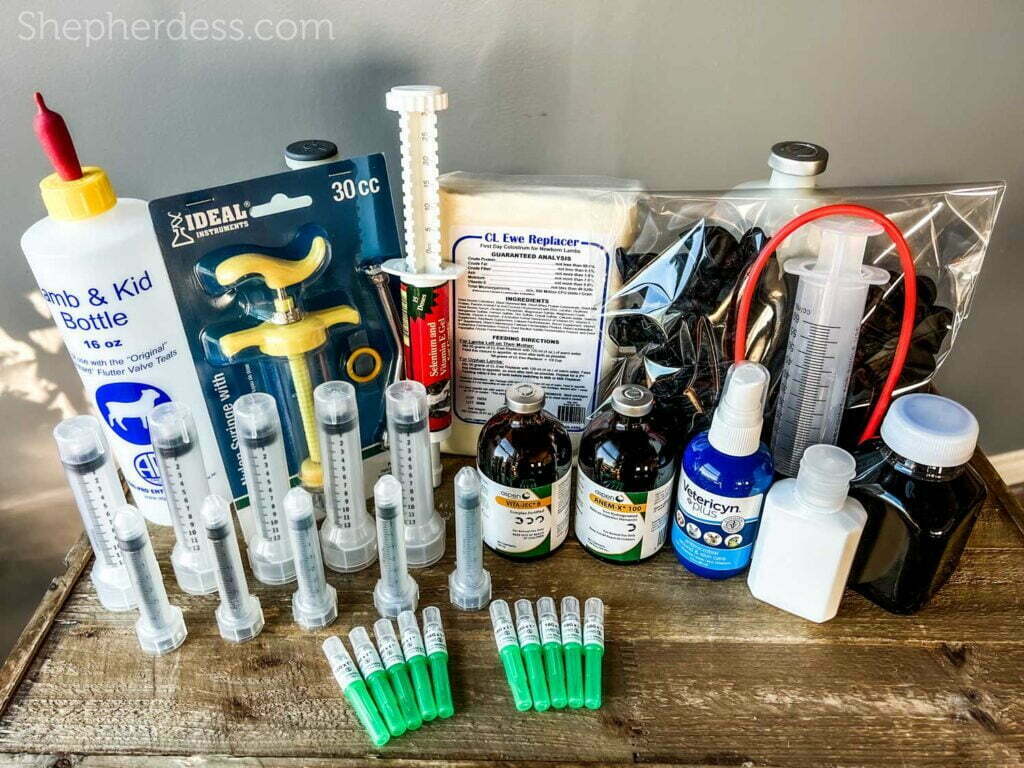
And I worked super hard and acquired distributorship for the 32 products I use to take care of my flock on an annual basis. It was something I had never done before, but the Lord opened doors.
I made both of these things available a Shepherdess.com, and by God’s grace, revenue tripled overnight… Because I found more than one way to meet the needs of the people I had spent two years connecting with…. through my email newsletter.
And that is the secret sauce. Listen to the people. Take your mind off of what you want to sell and listen to what they want.
I hope this summary helps you market your own farm!
-the Shepherdess
“So then neither is he that planteth any thing, neither he that watereth; but God that giveth the increase.” 1 Cor. 3:7
Reader Interactions
May 23, 2023 at 7:07 pm
great job way to show that you can do things the correct and ethical way and still be successful
May 24, 2023 at 4:03 pm
Thanks for your encouragement, Mike!
July 17, 2023 at 3:40 pm
Why do you have lots of different farm names, Harmony Farms, The Sheperdess, Lamb for Life, etc.? Do you have any recommendations on coming up with farm names?
July 18, 2023 at 3:30 pm
Hi Betty! I have different names for the different products and facets. My brand is the Shepherdess and my farm name is Harmony Farms. Here is a video I made on the topic: https://www.youtube.com/watch?v=DdNIj4g9Abc&t=26s
April 3, 2024 at 5:19 am
I very much admire your work and thinking.
July 7, 2024 at 8:59 am
Hello i am interested is starting a sheep farm also… i googled it and you are the first place i found. Right now i have no land However, i know the LORD is about to provide much… So i believe i will have many questions. Years ago i did have 7 horses on my property. However that is apples and oranges
August 1, 2024 at 3:00 pm
hi im emmanuel from kenya i would like to start a sheep farm early next year i will realy try to follow your footsteps.
August 11, 2024 at 6:02 am
In the process of researching a small farm operation for my wife and I. Trying to find the profitability. Your utilization or social media is the way of the future. It seems that’s an area I will really have to dive into. I’d really like to partner with you on those areas. I appreciate all the feedback you’ve provided with your experiences.
August 12, 2024 at 3:40 pm
Subscribe to my newsletter: I have some free classes on the topic upcoming: https://www.shepherdess.com/newsletter/
Leave a Reply Cancel reply
Your email address will not be published. Required fields are marked *
Save my name, email, and website in this browser for the next time I comment.
Notify me of follow-up comments by email.
Notify me of new posts by email.
Get to know the farm!
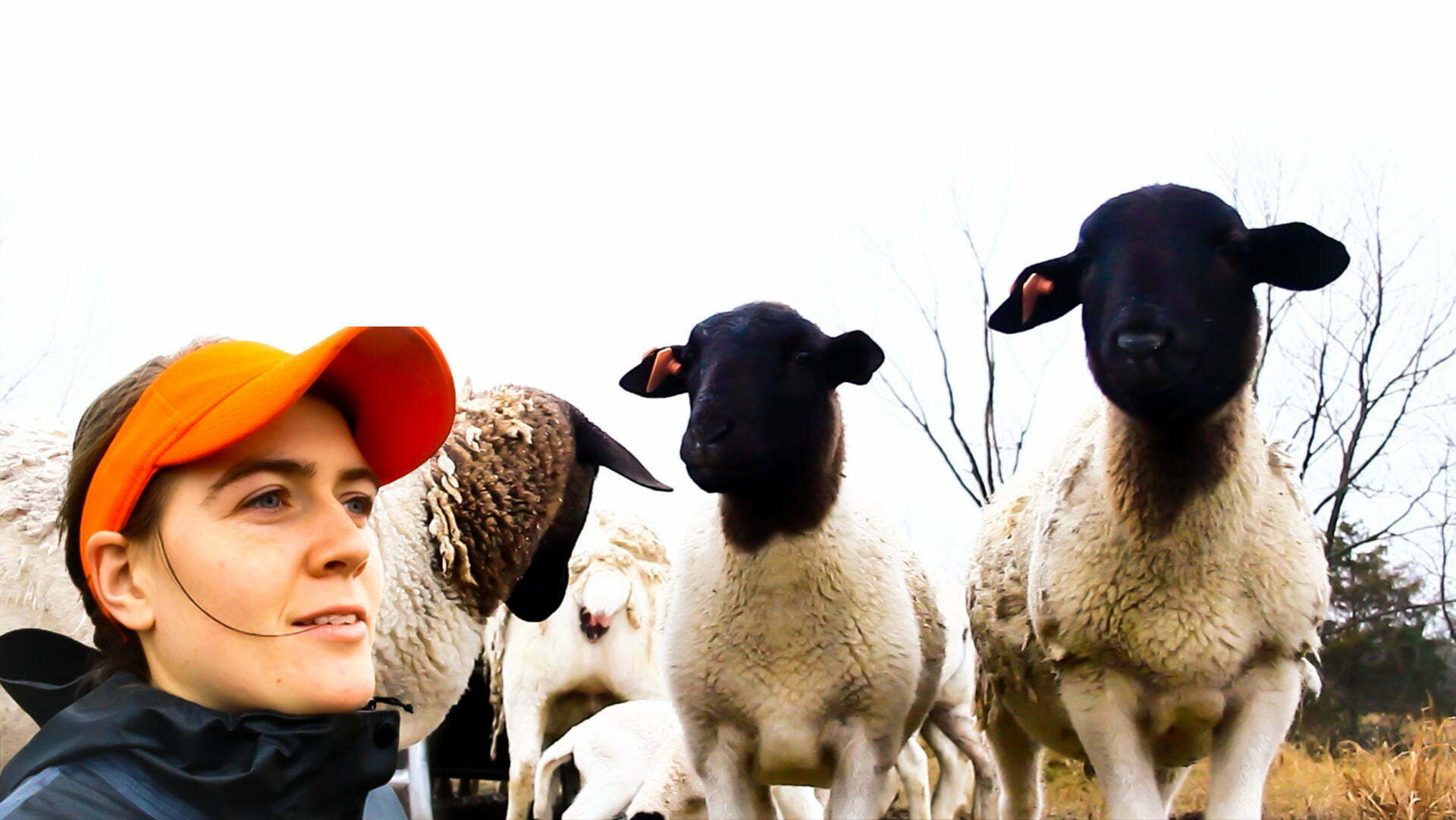
Contact Info
Harmony farms.
Main Street Sulphur Springs, TX, 75482, USA

How to Start a Sheep Farming Business
By: Author Tony Martins Ajaero
Home » Business ideas » Agriculture Industry » Livestock Farming
Do you want to start a sheep farming business? If YES, here is a complete guide to starting a sheep farming business with NO money and no experience . Sheep are kept for a variety of reasons such as to earn a living from their wool, meat, milk and hides; as a hobby farming in order to obtain organic meat that has been homegrown; to control vegetation or as a pet.
Due to the multi-purpose nature of sheep, it is important that you realize that you cannot use your sheep to satisfy all the purposes mentioned above especially as different breeds are more suited for different purposes and therefore the feed, pasture and production practices will vary.
Deciding to raise sheep can be very rewarding regardless of the purpose you have in mind, but before success can be attained, it is important that careful planning be made. As a sheep farmer, your duties include feeding the sheep, giving medication, shearing wool, maintaining the farm buildings as well as fences, giving assistance during difficult births, checking the flock for any signs of disease and managing waste.
Suggested for You
- How to Start a Goat Farming Business
- How to Start a Peacock Farming Business
- 10 Best Exotic Animals to Breed and Sell for Profit
- How Much Do Goat Farmers Make a Year? [Profit Margin]
- How Much Do Contract Hog Farmers Make Yearly? [Profit Margin]
You might also be responsible for engaging in activities that will publicize your sheep farm to distributors of meat and wool, maintaining farm equipment, harvesting hay and also ensuring that the sheep are duly transported to show rings.
First of all, it is important that you are aware of the different sheep breeds that are available depending on what you need them for. Once you have decided on the breed, you will need to make a decision on how many sheep you intend to purchase.
If you are going to be raising sheep for livelihood, then you must take into consideration the market prices and the returns you are likely to get. It is important to note that if you intend starting on a small scale, it might be difficult to make profit especially if the environment is not so conducive.
Since the highest quality meat is produced from lamb, it is vital as a sheep farmer that you understand how critical this aspect of the business is. Lamb processing usually surge during spring than at other times of the year and so most sheep farmers usually schedule lambing in the fall so as to be able to produce lamb in the spring.
However, there are only certain breeds that lamb during the fall as most of the breeds usually lamb during late winter or early spring. If you are going to breed ewes, it is essential that you engage in careful selection so that you can make a profit.
Finally, it is important that you have a business plan for your business. Even though a business plan might look cumbersome, it is necessary because it enables you have an idea of how the business is likely to turn out after factoring in the negatives and positives.
Also, a business plan can help you source for loan from either a financial institution, an external investor or even get a grant to start your sheep farm.
19 Steps to Starting Sheep Farming Business
1. understand the industry.
The sheep and wool industry is considered to be in a long-term decline due to decreasing inventories, farm numbers and shrinking revenues. The rate of return that the industry has experienced has resulted in instability. Per capita consumption within the United States has been fairly steady within the past decade; however, that is caused mainly by the increased importation of lamb meat.
And so even though the sheep industry has made some gains in productivity, domestic supply has however fallen due to the decline in inventory which has far outpaced output per animal. The revenue generated by the sheep industry according to IBISWorld is $971 million and there has been a negative annual growth of -0.9 percent between the periods of 2012 and 2017.
There are more than 95,500 sheep farms in the United States employing about 97,000, which means that most farms are either run by the owners or by less than two hands. The industry is one where no companies hold a dominant market share.
Sheep farms have not streamlined their growing operations unlike other sectors in the livestock industry. The decline in wool production is due to textile producers having a preference for synthetic fibers. Most of the sheep farms are in locations where the markets and environmental conditions are favorable. Most of the factors that influence where sheep farms are located are good pastures, proximity to water supplies as well as downstream markets.
Most farms are also located in areas where other livestock exist as well as where there are industry enterprises. Nearly 17 percent of sheep farms in the United States are located in the West due to the fact that there are large lands available for grazing and also that it is quite close to regions that grow major grains, which means the sheep farmers are close to feed inputs.
More than two-thirds of the sheep produced in the United States are produced in the Mountains, Southern Plains as well as Pacific regions. The number of sheep farms as well as the number of sheep in all the regions except that of New England has seen a significant decline since 1975.
Even though several states have registered slight gains in recent years due to growth of hobby farms, states that are into major productions have however registered loses due in large part to the exit of medium and large scale sheep farms.
However, Texas, California and Wyoming are still the major sheep producing states. The sheep meat industry according to history was developed as a byproduct of the wool industry and the conditions in the wool industry over time has had a large influence on the direction of the sheep industry.
The decline in wool demand started after World War II due to a reduction in the use of wool by the military service personnel. Also, synthetic fibers started becoming popular amongst consumers due to being more attractive and less expensive when compared to wool.
Even though the wool sector has had much support from the government, the act has been unable to sustain the sheep industry. The emphasis on wool before the Second World War resulted in the meat production being less expensive as mutton (meat from older sheep) weren’t really desirable especially as the sheep were kept for successive shearing purposes.
The fact that wool and mutton are joint products in the sheep industry means that they are produced in fixed proportions even though some sheep produce more meat than wool, while others produce more wool than meat.
However, due to the fixed proportions, the wool market has a direct impact on the mutton market. And due to the fact that demand for wool and its prices have dropped drastically over the past few decades, as the cost of adding value to the wool exceeds the cost of producing the wool, it has by a large extension also threatened the mutton producers/market.
Attempts by the sheep industry in the United States to differentiate and promote sheep from other meats have failed drastically which has had the industry focusing on high-value meat for the domestic market without looking to neither capitalize on market segmentation nor look to develop its export markets.
Most of the lower-value cuts are usually rendered or used as pet food. Only little of whole mutton carcasses are exported mainly to Mexico.
2. Conduct Market Research and Feasibility Studies
- Demographics and Psychographics
The demographic and psychographic composition of those who consume sheep and its products can said to be certain Americans, wool production factories, laboratories, pet stores, other livestock farms as well as a host of other people.
Therefore, if you are looking to have an accurate demography for your sheep farming business, it is essential that you conduct a thorough research in order to determine who your true target market is.
3. Decide What Niche to Concentrate On
As a sheep farmer, you are expected to raise sheep in order to sell their meat, wool, milk or lambs to those that want them. There are also sheep farmers that raise sheep as a hobby or for pet purposes.
If your purpose of raising sheep is for livelihood purposes, then it is vital that you choose a niche in order that you might stand out from other sheep farmers. However, before choosing any niche, ensure that you have conducted a thorough research so that you do not end up wasting time and money.
Below is a list of niche ideas within the particular business that you can specialize in;
- Breeding Ewes
- Replacement lambs
- Market lambs and sheep
- Breeding rams
The Level of Competition in the Industry
Starting a livestock farm is not usually an easy venture because asides from sourcing for capital and waiting for a while before you can generate revenue, the nature of the business is an unpredictable one.
Sheep farming in the United States even though going through a decline, there is still a level of competition which you might be expected to face when looking to start your business.
The sheep farm industry might not be as dominant as other livestock sectors but the industry is fragmented because even though there are large scale farms in operation, small scale farms also have a chance to compete and still get a share of the market. The advantage that the large scale farmers have can be said to be economies of scale.
Therefore, if you are looking to start your sheep farming business in the United States, you should be aware of two factors; the decline in the industry and the level of competition that you will get from those that are already in the industry.
4. Know the Major Competitors in the Industry
Even though there are no dominant farms in the sheep industry; there are however farms that have long been in existence and can be considered successful, and so as an entrepreneur looking to go into the business, it is essential that you know what farms have been successful and how they have kept at it.
Below are some of the well-known sheep farms in the industry;
- Whispering Pines Sheep Farm
- North Star Sheep Farm
- Kissane Sheep Farm
- Superior Farms
- Woolley Sheep Farm
Economic Analysis
In the Agriculture Census taken in 2012, there are more than 84,000 sheep farms in the United States of America with about 80 percent of the sheep owned by those with large scale operations primarily located in the Western part of the country, and states with the most sheep are Texas and California.
Those running a small scale operation of less than 100 sheep are actually the majority of sheep operations even though they only have 17 percent of the total market share.
The sheep industry is a small one when compared to other livestock sectors such as cattle and hogs. For more than two centuries, the sheep population in the United States which was at about 7 million in the 1800s and climbed to about 56 million in 1945 has drastically reduced past 7 million by 2003.
The numbers have slightly increased by 1 percent between 2015 and 2016 due to the fact that the trend in the industry has shifted from wool to meat.
Even though the sheep industry in the United States is largely dominated by a small number of large operations, there has continued to be a steady decline in the number of these operations.
However, in the eastern part of the country, small flocks are increasing due to the fact that this is where most of sheep and lambs are consumed. Sheep are very popular in small farms that practice sustainable farming.
Sheep farming is not for any entrepreneur looking to get rich immediately as the profit margins are quite small. This does not mean that the business is not a profitable one but to be able to turn in substantial profit, you will require at least more than 500 ewes, which is why most farmers do not run sheep farming as full time but as a secondary enterprise or hobby.
Income from sheep farming is usually derived from sale of lambs, wool, milk, lease of sheep for grazing, and for bio-medical purposes.
5. Decide Whether to Buy a Franchise or Start from Scratch
Deciding whether to start your business from scratch or whether to buy a franchise will depend on a number of factors such as what kind of business you are looking to run, what franchise opportunities are available, what your budget is, and what goals and objectives you are looking to achieve.
The livestock industry has little franchise opportunities available except in areas such as processing and packaging and so there is no franchise opportunity for those in the sheep farming industry, which means entrepreneurs looking to start this business have to go for it from the scratch.
There are so many factors that you will need to take into consideration when looking to start your business from the scratch such as capital, pasture, building, marketing, revenue generation, experience in handling livestock and so many others and so this is not something that should be started by one who isn’t ready to dedicate time and resources to it.
One good thing about running your business venture yourself is that you are able to control the pace of your business.
6. Know the Possible Threats and Challenges You Will Face
Any entrepreneur looking to start a business should be aware of the threats and challenges plaguing the industry he intends to start the business and therefore have laid down strategies in place to combat or reduce the effect of the threats and challenges on the business.
Be that as it may, it should be noted that not all threats and challenges can be easily handled and the best the entrepreneur can do when faced with them is to try and focus on why he or she started the business in the first place.
Some of the threats and challenges that you are therefore likely to face when looking to start your sheep farming business in the United States include; decline in demand for wool, loss of sheep to predators, low prices for lamb meat, labor shortage, dealing with competition, and the perceived threat of industry concentration.
7. Choose the Most Suitable Legal Entity (LLC, C Corp, S Corp)
Whether you are running a farm, retail store or technical business, one important decision that you will need to make before the business can be started is the best legal entity for the business venture.
The reason why the decision of a legal entity is important is due to the fact that whatever legal entity you choose will have an impact on the business in the short and long run. It is therefore important that you conduct a research to know what other sheep or livestock farmers in your area are using or you engage the services of a legal attorney to help you out.
As a farmer looking to start your sheep farm, there are five basic legal entities which you can choose from and they are; sole proprietorship, partnership, cooperative, Limited Liability Company (LLC) and corporation.
The entities have attributes that make them different from each other and the major attributes are; ease of ownership and management of legal entity, taxation structure, extent of liability and flexibility of the legal entity.
Most entrepreneurs starting their businesses in the United States usually choose a sole proprietorship due to the fact that it is the simplest and easiest legal entity to form. Farmers aren’t also left out of using this kind of legal entity as about 35 percent of livestock farmers in the United States are sole proprietors.
Under the sole proprietorship, the sheep farmer is in complete control of the business especially when it comes to profits and even losses. However, his sort of legal entity does not protect the farmer much when losses occur as his personal assets are at risk.
The partnership kind of legal entity is similar to the sole proprietorship with the major difference being that the risks are borne by all the partners.
The LLC is the next popular legal entity used by entrepreneurs in the United State of America and there are about 35 percent of livestock farmers using this kind of legal structure.
While an LLC is not as simple to form like the sole proprietorship, it is more flexible when compared to a corporation. Farmers under this legal entity have their personal assets protected should the business incur any losses.
The corporation is also similar to the LLC but more formalized. It is split into the S and C Corporation. Under a cooperative, the goal is usually to maximize profit for participating members and farmers who form this kind of structure do so to gain various benefits. Each member farmer takes part in all the business decisions that are involved in running the market. Whatever legal entity you plan on choosing, ensure that you have conducted a thorough research.
8. Choose a Catchy Business Name from the ideas Below
Having a name for your business is necessary to ensure that you stand out from your competitors and can easily be identified by your target market.
Whether you are looking to use your name or a fictitious one, ensure that it is something that is catchy, unique and indicative of the industry you are in.
Some of the catchy business name ideas that will be suitable for your sheep farming business include;
- Bliss Sheep Farm
- Sheldon Livestock
- Sheep Ranch
- Ben Sheep Farm
9. Discuss With an Agent to Know the Best Insurance Policies for You
There are a number of calamities – natural or man-made – that can occur when one is running a business and when they occur, it is important that you are able to rebuild, which means that you should be adequately prepared.
Every endeavor comes with risks and not being prepared will mean you aren’t taking your business seriously enough. Buying appropriate insurance policies means that you are looking to protect yourself, employees (if any), your investment as well as your bottom line.
Some of the insurance policies which you should therefore consider buying for your sheep farming business include;
- General Liability Insurance
- Casualty Insurance
- Livestock Blanket Coverage
- Health Insurance
- Hazard Insurance
- Property Insurance
- Equipment Insurance
- Business Interruption Insurance
- Home-based Business Insurance
10. Protect your Intellectual Property With Trademark, Copyrights, Patents
As a sheep farmer, you will not require to apply for any sort of intellectual property protection before you can start your business.
If you however deem it important to apply for an IPP on the name of your company, logo and any other concept, you can do so. Talk to a lawyer to find out what is necessary for you.
11. Get the Necessary Professional Certification
You do not require any professional certification if you intend running a sheep farm as most farmers usually possess high school diploma as a minimum. There are however several sheep farmers who have college degrees in animal science or a related field.
Additional educational opportunities are usually offered through memberships in a credible professional organization such as the American Sheep Industry Association (ASIA) or any other reputable organization as they also offer farmers networking opportunities as well.
12. Get the Necessary Legal Documents You Need to Operate
If you do not want to run into trouble with the law, then it is necessary that you have all your documents in place before starting the business.
The livestock industry is highly regulated and so not having legal papers could cause you to pay a fine or be banned from running the business. if you aren’t sure of what documents you will need, approach other sheep farmers in your area to find out.
Below are some of the legal documents that you will need to run your sheep farm;
- Business Plan
- Certificate of Incorporation
- Business License and Permit
- Insurance Policy
- Employment Agreement
- Contracts Document
- Operating Agreement for LLCs
- Sales Tax Permit
- Employee Identification Number (EIN)
- Federal Tax Identification Number (TIN)
13. Raise the Needed Startup Capital
No matter what your purposes for raising sheep is and no matter how rewarding the venture might eventually be; you will require money to start before you can begin to reap the benefits. Aside from money to buy the sheep, you will also require money to build a shelter, handling facilities and other equipment which you will need to raise your sheep.
If you do not have the capital to start your business with, it might be necessary for you to explore other options and most of the options you intend to source for capital from will require you to show a plan on how serious you are about the business and how you intend to repay.
Some of the financial options that you can explore include;
- Generating part of your startup capital from personal savings and sale of personal property
- Applying for grants from federal, state and private institutes
- Sourcing for soft loans from family members and friends
- Applying to commercial bank for loan
- Partnering with an investor in order to split capital
14. Choose a Suitable Location for your Business
Location is crucial in raising sheep because of the pasture, handling facilities and feeding that you will require for your business. If you are looking to raise your sheep as a pet, then you might not need to bother about getting a large place, and so if your backyard is large enough, you can raise your sheep there.
If you are however looking to raise sheep for livelihood, then you will need a large number of sheep in order to become profitable, and in running a large herd of sheep, you will need to acquire somewhere that is suitable for the sheep.
If you are going to be buying or leasing a land to start your business, then you should consider the building and handling facilities that will be erected and then ensure that it will readily accommodate the sheep and where they will graze.
You will need to consult with a real estate agent in order to help you secure a location that is within the zoning regulation as livestock cannot be raised from just anywhere. Ensure that the insurance agent has an idea of your budget so that you do not end up spending more than you had intended and then causing a strain to your overall budget.
You should ensure that your location can be easily accessed and is also conducive for the sheep you intend to raise as well as whatever employees will be working there.
15. Hire Employees for your Technical and Manpower Needs
The buildings that you will need to raise your sheep will depend on several factors such as the size of your flock, the environment or climate as well as when lambing is likely to occur.
Most sheep farmers build a barn because not only do they get to store feed and supplies in the barn but the sheep are also protected from wind and rain. Also, the barn is very critical if lambing occurs in winter. If you are however raising a small flock and will have lambing occur in the summer or spring, you might just need a small shed.
Regardless of the size of your flock, you will still require handling facilities as sheep always need individual attention. Handling facilities are always used to gather, sort and isolate the sheep for procedures such as medical, shearing and trimming.
A good handling facility will reduce the chance of injury to the animals as well as the handlers and also reduce the time spent on procedures. Handling facilities include a gathering pen with spare room for salt blocks, water tanks and feed; a forcing pen, sorting pens and chutes.
Sheep are meant to graze and so having pasture (which includes a mixture of grasses, brush, legumes and leaves) is an important part of raising sheep. The carrying capacity of the land will depend on factors such as plant species, soil, temperature, precipitation and also the layout of the land. One acre of high quality pasture should be able to accommodate four sheep.
Nutrition is essential in not only maintaining one’s flock but in also ensuring that the sheep grows fast, can produce greater wool and milk and also higher fertility. The primary components of the sheep’s diet are pasture and hay, vitamins and minerals are added as supplements when needed. Grains are often added in situations when the ewes are pregnant or during lambing.
Another important nutrient that sheep need are mineralized salt in order to help prevent bloating. It is important that the feed and diet of the sheep are balanced. While one person can run a small sheep farm, more hands are usually needed to run medium or large scale sheep farms.
The Service Delivery Process of the Business
Once you intend to purchase the sheep you intend to use, ensure that you know all there is to about the sheep’s history as well as its physical condition at the point of purchase. It is best to purchase the sheep directly from the person that raised them and also necessary to have a vet inspect the sheep you intend to buy so that the best sheep can be chosen for you.
Ensure that the sheep are fed with their favorite treat and that you coax them to follow you without them thinking that they are being chased. This is because when sheep think they are in danger, they usually bunch together and try to escape. You need to find a way to get at least one sheep to come to you because others will naturally follow.
Even though sheep do not require much protection, it is still best that they are fenced in using a woven wire or smooth-wire electric fencing. In order to keep the pasture fresh, ensure that the sheep are rotated into different paddocks.
16. Write a Marketing Plan Packed With ideas & Strategies
One way you can generate revenue that will sustain and grow your business is via marketing. Marketing is crucial for every business because it involves the entrepreneur rightly anticipating the needs of the consumers and then crafting the strategies which will ensure that the needs are met.
Through marketing, you not only create awareness for your business but you also get to penetrate the market and get a fair share for yourself while competing fairly against your competitors. Before any marketing strategy can become effective, it is best to conduct a thorough survey so that you will have an idea of who your target market is and what they expect from you.
It is only after you have an idea of your target market that you can begin to write out your marketing plans and policies and then create the marketing strategies that will enable you meet your core goals and objectives.
It is essential that you monitor your marketing strategies from time to time so that you can find out which ones have been effective and which ones need to be modified or removed.
Below are some of the marketing ideas and strategies that you can use for this particular business;
- Ensure that you place adverts in local newspapers, agricultural and other related magazines as well as on local radio and television stations about your sheep farm
- Create a website in order to maintain an online presence
- Ensure that your sheep farm business is listed in farmers’ guide, yellow pages as well as online directories
- Attend livestock farmers seminars and conventions in order to remain upgraded of industry trends and changing government regulations while also using the opportunity to network
- Use social media platforms such as Facebook, Twitter and Instagram to create awareness about your sheep farm business
- Install flexi banners in various strategic locations in order to create awareness for your sheep farm
17. Develop Iron-clad Competitive Strategies to Help You Win
Every entrepreneur will have to face some form of competition either directly from the industry or indirectly from other industries and therefore it is vital that the entrepreneur be prepared by having competitive strategies in place.
Some of the possible competitive strategies that you can therefore use to win over your competitors include; engaging in sustainable farming and providing value added services to your customers.
18. Brainstorm Possible Ways to Retain Clients & Customers
While attracting customers is one of the toughest part of running a business, ensuring that majority of the customers which you have attracted stick to your business is something that most businesses often fail at.
Retaining a high number of customers for your business means that you will be having a steady stream of income as opposed to the business that has to keep attracting new customers all the time.
Asides from having revenue stream steadily, you will also end up spending less than you would have if you constantly had to engage in promotional activities that will attract new customers. It is therefore advisable that you find out what strategies will make customers stick to your brand.
Some of the reasons why customers always stick to a brand is due to the quality of products and services that they are getting. Now that customers are getting conscious of what they consume, livestock farmers who are conscious of the practices in their farms in alignment with current trends in the industry are likely to get loyal customers than those who run their farms anyhow.
Another way to increase customer retention for this particular business is to ensure that you offer customer service during and after sales. Customers like to feel valued and so engaging in support after a sale is likely to make them not only happy but also to stick to your company.
19. Develop Strategies to Boost Brand Awareness and Create a Corporate Identity
Boosting awareness for one’s brand is an important way of communicating your corporate identity to your intended target market and also generating revenue for your business. This is because the more people are aware of the business; the easier it is for some to want to patronize the business.
The benefit that boosting one’s brand brings is why several successful brands do not mind set aside a certain amount of money in order to be able to generate the awareness that they feel will be of benefit to their business.
Below are some of the strategies that can be used to boost awareness for your brand and create a corporate identity for your company;
- Join a professional organization such as the American Sheep Industry Association (ASIA) in order to create awareness for your sheep farm
- Ensure that you install flexi banners and signage in various strategic locations around the area where your sheep farm is located
- Encourage your loyal customers to help spread the word about your sheep farm
- Create a website in order to showcase your sheep farm
- Ensure that you place adverts about your sheep farm in local newspapers and related magazines as well as on radio stations
- Get a Facebook and Twitter account and use this to create awareness about your sheep farm
JavaScript seems to be disabled in your browser. For the best experience on our site, be sure to turn on Javascript in your browser.
Business Management
If you’re thinking about raising sheep commercially, there are many different factors to consider. Use Penn State Extension’s vast collection of resources to help make your farm a profitable one. Topics covered include an introduction to livestock production, using flock records to set goals and make selection decisions, farm biosecurity, pricing meat, marketing your products, and farm finances.
Raising Sheep for Profit
Raising sheep for profit is possible on both small acreage-farms and much larger enterprises. Profitability can be challenging, but with productive sheep and close control of expenses, it is possible to make your operation efficient. Successful marketing of sheep products is also critical for a profitable sheep operation.
Sheep producers have to face another challenge. The average consumption of lamb is declining and people consume it mostly during the spring holidays rather than all year. Producers can do a lot to increase the popularity of lamb. They can market it for various ethnic holidays or there may be existing markets to take advantage of.
Timing is another important factor. The price of lamb is often higher in the spring. Knowing what prices to charge for your meat cuts is dependent on the cost of production. The cost of raising an animal includes the cost of the initial purchase through until the day of slaughter.
Sheep Farm Business and Management
If you want your sheep raising operation to be a successful one, there are several factors to bear in mind. These include safe operation and facilities, nutrition and manure management plans, and risk management. Flock records can be used to set goals and make selection decisions. You should also have a strategy and budget for selecting your next ram . Being prepared for an emergency plays a critical role in a sheep raising business.
Another important aspect to consider is how you’re going to finance your sheep farm . There are many ways to finance your new enterprise, but you will need a written business plan to show the funders how you plan to use funds and make repayments. You can use budgeting to help guide you in making the best financial decisions.
Penn State Extension’s Custom Agricultural Business: A Guide to Get You Started is for farm owners, operators, and producers who want to know more about running a successful livestock business.
- Product Name
- Date Posted

Sheep Management and Production: Instructor Guided

Marketing Lamb and Goat for Holidays

Sheep Grazing to Maintain Solar Energy Sites in Pennsylvania

What You Should Know About Buying Livestock

What if Lambs Were Priced on a Grid?

Have You Reviewed Your Sheep Records Lately?

Building an Emergency Response Plan for Livestock Producers

Body Condition: One More Evaluation Tool

Integrating Grazing into Cropping Systems: Infrastructure

Milking Sheep Production

Off-Season and Accelerated Lamb Production

How Much Should You Charge? Pricing Your Meat Cuts

How to Shear Sheep

Use Flock Records to Set Goals and Make Selection Decisions

Review Your Sheep Records

Sheep Records: The Key to Profitability

Do You Have a Plan for Marketing Your Lambs?

Exploring Two Ways to Direct Market in Pennsylvania

Why Aren't All Meat Processors the Same in Pennsylvania?

So You Want to Raise Sheep or Goats?

Spring Lamb Production

Sheep Management and Production

Do Your Sheep and Goats Have ID Tags?

Pennsylvania Nutrient Management Program
You may also be interested in..., personalize your experience with penn state extension and stay informed of the latest in agriculture..
How To Start Sheep Farming Business?
- Pinterest 14
Learning more about how to start sheep farming business is important, especially if you want to start a new business. Sheep farming is actually rewarding, whether you raise for your livelihood, as a hobby or as a source of homegrown food supply.
And it can be a great way to convert grass into food and clothing. It is actually possible to raise sheep profitably on small piece of land if you can manage your operation carefully.
Sheep are generally kept for many different purposes such as meat, milk, skin and fiber.
Success in sheep farming business depends on good planning in advance, solid and continual management of the farm and also on keeping a record of everything.
Commercial sheep farming business can actually be a great source of income and employment.
Starting in a small scale and expanding gradually will be good. Sheep products (meat, fiber etc.) have a very good demand in the market, so you don’t have to worry about marketing.
And there is also an opportunity to export sheep products in the international market.
However, here we are describing more about ‘how to start sheep farming business’. Read below to learn more about the business.
Table of Contents
How to Start Sheep Farming Business
Staring commercial sheep farming business is relatively easy, as the sheep are smaller sized animals.
But it’s wise to make a better business plan prior to starting this business, and work according to the plan. Here we are describing more about starting sheep farming business.
Why Do You Want to Start Sheep Farming Business
First of all, decide the reasons actually why you want to raise sheep. Generally sheep are raised for many different reasons.
Some people raise sheep for earning a living from their meat, milk, hides and wool.
Some raise sheep for vegetation control, some raise for obtaining organic homegrown meat and also for other products.
A few people also raise sheep as a hobby or as a pet. So, it is very important to determine, why you actually want to raise sheep.
Do You Have Enough Time & Money for Raising Sheep
You also need to consider if you have enough time and money for starting sheep farming business.
You need money for purchasing sheep, building their shelter, fencing and also for vaccinations and vet checks. Consider whether you can arrange the money or not.
Select Farm Location
You will need to select a very good location for starting your sheep farming business and it’s very important.
You will need to select such an area that has all the facilities required for raising sheep .
Required facilities for raising sheep are a good and clean water source, availability of greens, good transportation, good marketing and vet service.
Consider all these facilities are available while selecting a good location for your farm.
Select & Purchase Breeds
There are numerous sheep breeds available throughout the world to choose from.
Some common and popular breeds for commercial sheep farming business are Cheviot , Suffolk , Polypay , Jacob , Hampshire , Katahdin , Merino , Ramboullet, Bannur, South Down etc.
Choose the breed depending on your production purpose. Starting with the local breeds will be better, especially if you are a beginner.

After selecting good and right breed for your operation, it’s time to purchase the animals.
Consider famous farms or breeders within your locality first for purchasing quality animals.
You can also purchase sheep from any of your nearest livestock market. Online classified websites are also a good option for sourcing quality animals.
Shelter/Housing
Good shelter/housing system is a must for raising sheep, although sheep don’t require high-end or expensive housing.
Your sheep will be healthy and live happily if you can fulfill their basic housing demands.
Sheep require shelter not only for keeping themselves safe from predators, but also for keeping themselves safe from adverse weather conditions.
An adult sheep will need between 10 and 20 square feet space depending on the breed and size of the animal.
You have to ensure that the house is always clean and dry, and the roof needs to be at least 6 feet high from the floor.
Good ventilation system is a must for keeping sheep, and you should ensure flow of sufficient air and light inside the house.
Feeding Your Sheep
Sheep are grazers and they love to graze. So, you have to ensure availability of good quality pasture for your animals.
The pasture for the sheep can include any mixture of brush, trees, grasses and legumes.
But in case if you have poor pasture, then you have to supplement their diet with hay and specialized pellet feed. Salt lick blocks are also required for the sheep.
You also need to ensure there is always fresh water available for your animals. Clean the feeding and watering pot of your sheep on a regular basis.
Fencing is a good option for keeping your animals inside, but it’s not a mandatory.
A good fence around the pasture will keep the sheep safe from predators or any other dangers. Both wire and woven fences will be good for your animals.
Health Care
Good health care and management not only keep the animals healthy and strong, but also helps to maximize income from the business.
Vaccinate your animals on a regular basis. You also need to ensure that the sheep are wormed regularly with a commercial worming paste that is suitable for sheep. Read: Caring for sheep .
Sheep are vulnerable to foot rot diseases. So, regular hoof trimming is required for the sheep.
Shearing is also important for raising sheep. Read: Sheep shearing information & guide .
Marketing sheep products is easy and there is already an established market for sheep products.
Consider marketing your products in your local markets first.
It will be better if you can set your marketing strategies before starting your sheep farming business.
You can make very good profit from your sheep farming business, if you follow modern systems/rules for raising sheep. God bless you!
Recommended for You

White Horned Heath Sheep Characteristics, Uses
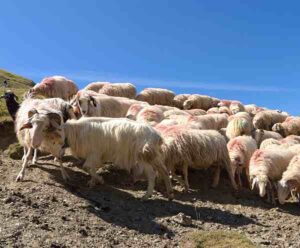
Basco-béarnaise Sheep: Characteristics, Uses, Photo

Gulf Coast Native Sheep Characteristics, Uses

Alai Sheep: Characteristics, Uses, Photo

Montadale Sheep: Characteristics, Uses, Photo
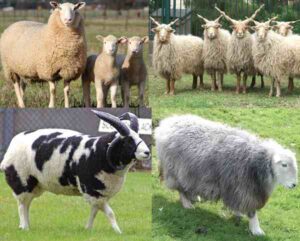
Sheep Breeds: List Of Some Popular Breeds
2 thoughts on “how to start sheep farming business”.
good and helpful information on the sheep farming business.
If you start raising sheep they will deliver you a bundle of health and wellness advantages. I love these beautiful creature.
Leave a Comment Cancel Reply
Your email address will not be published. Required fields are marked *
Save my name, email, and website in this browser for the next time I comment.
- Agriculture Farming
- Livestock Farming
Project Reports
- Hydroponics
- Best Fertilizers
- Vertical Farming
- Sheep Farming
- Goat Farming
- Poultry Farming
- Fish Farming
- Pig Farming
- Dairy Farming
- Rabbit Farming
- Success Stories of Farmers
- Boost Fruit Yield
- District Wise Crop Production
- Schemes & Subsidies
- Agriculture Colleges
- Farm Insurance
- Disease Control And Management
Agriculture
Aquaculture
Horticulture
Agri Business
Sheep Farming Business Plan for Maximum Profit
Table of contents, advantages of sheep farming:, sheep farming business plan:, procure quality breeds:, housing for sheep farm:, care and management:, sheep farming business plan for profit.
Today, we discuss the sheep farming business plan in India along with sheep farm management, sheep feeding methods, and sheep housing basics for maximum profits.
Sheep farming business is the raising and breeding of domestic sheep. Sheep farming is a branch of animal husbandry. Sheep are raised mainly for their meat (lamb and mutton), milk (sheep’s milk), and fiber (wool). They also yield sheepskin and parchment.
Sheep farming is profitable because of below-mentioned reasons:
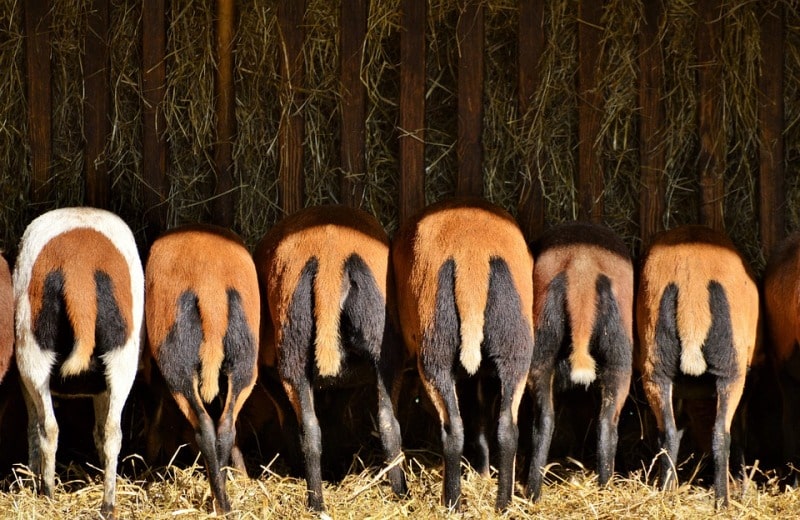
- First of all, you can start the Sheep farming business with small investment and space. The Sheep farming business doesn’t demand huge capital in starting.
- The Sheep business requires less labor for daily maintenance and care. So, you can run the farm with less working capital investment.
- Generally, Sheep give birth to kids frequently. So, you can make a large size herd within a short period.
- Sheep need less space for living. Even you can raise sheep with other livestock animals.
- Additionally, you don’t want to build expensive housing for the sheep. So, it allows you to maintain cost early.
- Sheep eat several kinds of plants. So you don’t need to present high-quality feeds all the time.
- Sheep are hardy animals. They can adapt to all types of environment. Therefore, you can raise sheep in a wide range of temperate climates, including arid zones.
- Finally, the products get from sheep-like meat, wool, and milk have high demand in the market. So, Sheep farming business is a commercially lucrative business for entrepreneurs who want to start a livestock business.
The advantages of Sheep farming are given below;
- Sheep do not require expensive buildings to house them and on the other hand, require less labor than other kinds of livestock. The foundation stock is cheap and the flock can be multiplied rapidly.
- Sheep are easy to handle and normally require little input. Sheep production does not need elaborate facilities and equipment and sheep are economical converter of grass into meat and wool.
- Sheep will eat several kinds of plants compared to other kind of livestock. This will make them excellent weed destroyer.
- The production of wool, meat, and manure provide three several sources of income to the shepherd.
- Mutton is one type of meat towards, which there is no prejudice by any community in India and further development of superior breeds for mutton production will have a great scope in the developing economy of India.
You may also check the Nutmeg Cultivation Project Report .
Below are some steps on the sheep farming business plan :
Selecting a suitable location for a sheep farm:
Selecting a suitable location for sheep farm is very important. Consider the necessary facilities for raising sheep, while selecting the place.
It is an important task in a sheep farm business plan. A suitable farm location has numbers of benefits. Always choose a place where there is an availability of the entire essential such as fodder stock. Availability of green fodder, good transportation, good medication, along with a good source of fresh water is important for starting your business.
Procure the quality sheep breeds either trusted breeders or responsible farmers. Generally, you can find several sheep breeds throughout the world. However, all those breeds are not fit for farming in all areas. So, you will want to procure the breeds according to the agro-climatic condition of your location.
Additionally, you will want to select the breed according to the specific demand. Some breeds are appropriate for commercial meat production and some breeds are suitable for wool production. So, choose suitable breeds according to desired production purpose. Some of the most popular sheep breeds for business are;
- Rambouillet
Small-Scale Sheep farming does not need much space to start it. Also, there is no need for constructing an expensive house for them. The only need should be fulfilled is the need for fodder and need for freshwater.
Building the right housing for sheep farm is one of the main important aspects of establishing the sheep farm. You should provide housing that can protect the sheep from adverse climatic situations. You can give simple shade for fouse the sheep. However, you should construct the shade in an elevated area to prevent water stagnation. Additionally, you can produce the fodder trees around the shades and use the space as grazing land. Finally, the entire house should have sufficient ventilation facility.
For Commercial, construct a separate house for them to shelter them to protect them from the worst weather, pests, and diseases and also, from natural predators. Generally, for rearing sheep commercially, a shelter which is 20 feet long and 15 feet wider and having rooftop at 8 feet height is good enough.
You may be interested in the Most Profitable Crops .
You must provide proper feeding for the best result sheep farm. Additionally, you will need to give the food according to gender and age. Good-quality hay or stored forage is a highly productive feed for a sheep farm.
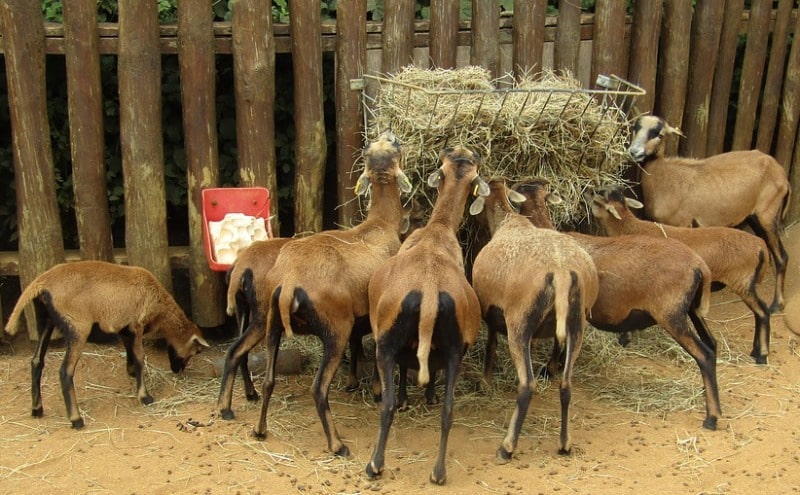
Make sure of the good stock of fodder for sheep. Since proper feeding is necessary for proper sheep growth for producing maximum. Supplying high quality and nutritious food to them keeps them healthy, more productive and free from diseases.
Always give high quality and nutritious food to them keeps your sheep healthy, more productive and also free from diseases. Generally, all kinds of grasses, corns, and plants are favored food of sheep. Providing a sufficient amount of fresh water along with enough nutritious fodder is essential for earning a big profit.
You should not miss the Horticulture Farming .
Make an appropriate fence around the pasture, if you allow them to graze on the pasture. Maintain the fence strong enough, so that they can’t go out, and stay safe inside. Good fencing helps to keep all types of predators out. You can make a wire or woven fence.
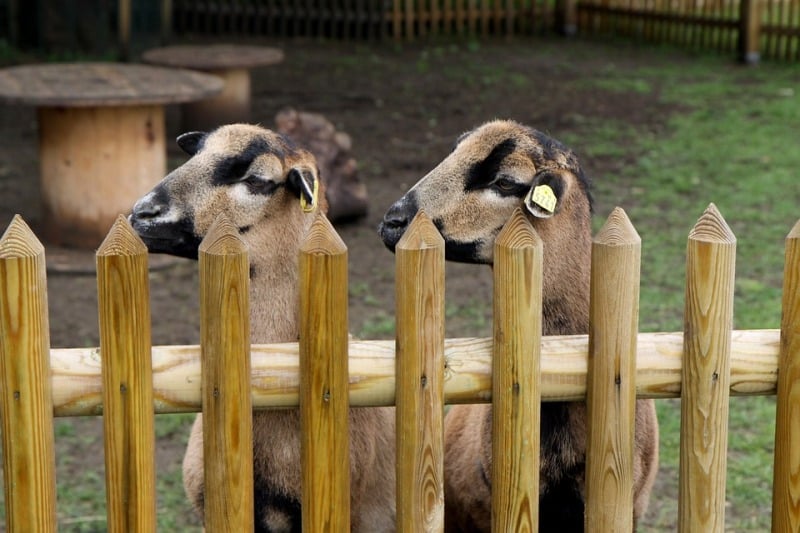
You will need to provide good care and management to obtain the maximum profitability of your farm. Broadly, you will want to procure quality breeds, provide good housing and food. Additionally, maintain the cleanliness of your sheep farm. In addition to that, provide the right vaccination to sheep. If you notice any sick sheep, separate the animal promptly and give proper treatment.
Always try to purchase quality and productive breeds, feed them nutritious foods and create a suitable house for them. Vaccinate them timely to prevent them from several types of sheep diseases. And always maintain good relation with the vet, so that you can ask for help anytime.
To get the optimum profit, always tap the local market of the products. It helps to maintain the transportation cost minimum. Additionally, always think about the other marketing avenues to get the maximum profits from sheep farming business .
You may also like Growing Beans Hydroponically .
hi, dear, i am a B.Phama graduate having 16 years of Pharma industry, looking for a loan to start goat farming on small scale basis, so let me know from where i can get the loan for the same.
rgds. ayyub
LEAVE A REPLY Cancel reply
Save my name and email in this browser for the next time I comment.
Common Challenges in Strawberry Farming: A Beginners Guide
Maximizing yield in ridge gourd farming: best practices and tips , sustainable agriculture with crfs (controlled release fertilizers): a game-changer for..., organic farming vs. natural farming (zbnf): key principles and differences, strawberry nursery establishment and management, modi vision for indian agriculture, government support and policies for zbnf in india, deworming schedule for sheep: a beginners guide, ultimate guide to beans farming in kenya: from planting to..., ultimate guide to natural vegetable farming, natural farming for sustainable livestock management, dairy farm technology in india: the future of dairy husbandry, comprehensive guide to organic farming in villages, modern sheep farming technology: the future of sheep husbandry, goat farming technology: the future of goat husbandry, how to build a low-budget goat shed: cheap ideas and..., goat farming training programs in india: a beginner’s guide, types of pesticides used in agriculture: a beginner’s guide, economical aquaculture: a guide to low-budget fish farming, 15 common planting errors that can doom your fruit trees, borewell drilling cost, pump price, and pipe cost, polyhouse subsidy, cost, profit, project report, tractor subsidy, bank loan, eligibility, schemes, process, malabar neem project report details guide, cold storage project report, cost and subsidy, mushroom farming project report, cost and profit analysis.

Virtual Tour
Experience University of Idaho with a virtual tour. Explore now
- Discover a Career
- Find a Major
- Experience U of I Life
More Resources
- Admitted Students
- International Students
Take Action
- Find Financial Aid
- View Deadlines
- Find Your Rep

Helping to ensure U of I is a safe and engaging place for students to learn and be successful. Read about Title IX.
Get Involved
- Clubs & Volunteer Opportunities
- Recreation and Wellbeing
- Student Government
- Student Sustainability Cooperative
- Academic Assistance
- Safety & Security
- Career Services
- Health & Wellness Services
- Register for Classes
- Dates & Deadlines
- Financial Aid
- Sustainable Solutions
- U of I Library

- Upcoming Events
Review the events calendar.
Stay Connected
- Vandal Family Newsletter
- Here We Have Idaho Magazine
- Living on Campus
- Campus Safety
- About Moscow

The largest Vandal Family reunion of the year. Check dates.
Benefits and Services
- Vandal Voyagers Program
- Vandal License Plate
- Submit Class Notes
- Make a Gift
- View Events
- Alumni Chapters
- University Magazine
- Alumni Newsletter

SlateConnect
U of I's web-based retention and advising tool provides an efficient way to guide and support students on their road to graduation. Login to SlateConnect.
Common Tools
- Administrative Procedures Manual (APM)
- Class Schedule
- OIT Tech Support
- Academic Dates & Deadlines
- U of I Retirees Association
- Faculty Senate
- Staff Council
Idaho AgBiz
Department of Agricultural Economics & Rural Sociology
Physical Address: E. J. Iddings Agricultural Science Laboratory, Rm 39 606 S Rayburn St
Mailing Address: 875 Perimeter Drive MS 2334 Moscow, ID 83844-2334
Phone: 208-885-1707
Email: [email protected]
Web: uidaho.edu/idaho-agbiz
Livestock Budgets
Livestock enterprise budgets can be used by producers, lenders and others to estimate costs and returns for many livestock enterprises. Budgets are updated in even years and are available in PDF and Excel format.
Cow-Calf Beef Budgets
- 250-head, summer on private range, winter feeding necessary (CC1) | PDF | Excel
- 300-head, summer on private pasture and range, winter feeding necessary (CC2) | PDF | Excel
- 500-head, summer on federal range, winter on federal and private range (CC3) | PDF | Excel
- 500-head, summer on federal and state range, winter feeding necessary (CC4) | PDF | Excel
- 300-head, summer on federal range, winter on harvested feeds and crop aftermath (CC5) | PDF | Excel
- 250-head, summer on federal and state range, winter feeding necessary (CC6) | PDF | Excel
- 500-head, summer on federal, state, and private range, winter on federal range (CC7) | PDF | Excel
- 250-head, summer on private pasture and range, winter feeding necessary (CC8) | PDF | Excel
Dairy Budgets
- 5,000-head, open lot dairy | PDF | Excel |
- 2,500-head, free stall dairy | PDF | Excel |
- 120-head, Jersey dairy | PDF | Excel |
- 210-head, open lot Holstein dairy (D1) | PDF | Excel |
- 210-head, free stall Holstein dairy (D2) | PDF | Excel |
- 10,000-head, Heifer raising facility | PDF | Excel |
- 400-head, Heifer raising facility | PDF | Excel |
Feedlot Beef Budgets
- Feedlot budget | Excel |
- 5,000-head, calf to slaughter (FL1) | 2018 PDF | 2018 Excel
- 5,000-head, yearling to slaughter, concentrate ration (FL2) | PDF |
Replacement Heifer Beef Budgets
- 100-head, bought in fall, sold in winter (HFR) | 2020 PDF | 2020 Excel
Sheep and Goat Budgets
Sheep budget | Excel |
- 1,000-head, April lambing on range, lambs sold as feeders (SR1-14) | PDF |
- 1,000-head, April lambing on range, lambs sold as fat lambs (SR2-14) | PDF |
- Ewes on pasture, lambs on drylot, 100-head (SF1-14) | PDF | EXCEL |
Dairy Goat budget | Excel |
- 200-head Goat Dairy in Southcentral Idaho (GD-18) | PDF |
Stocker Beef Budgets
- 200-head, bought in winter, sold in fall (ST1) | 2020 PDF | 2020 Excel
- 200-head, bought in fall, sold in spring (ST2) | 2020 PDF | 2020 Excel
- 200-head, bought in spring, sold in fall (ST3) | 2020 PDF | 2020 Excel
Please email Pat Hatzenbuehler at [email protected] if you need archived budgets.

- How can you buy land in Russia?
- Russian Land is the Most Fertile
- Situation of Agriculture in Russia
- Crop production in Russia is profitable business
- What is the most suitable territory for farming in Russia?
- Tax regime for business in Russia
- What size of land is better to buy?
- What types of crops are most often grown on Russian soil?
- Can a foreigner legally open a farm in Russia?
- What kind of crop do farmers grow the most in Russia?
- Fight for fertile land in the world
Land for sale in Russia

Land of 1800 hectares for wheat cultivation

Land plot of 5500 hectares in the Saratov region

Land 13800 hectares for rapeseed cultivation

500 hectares by the river for vegetable cultivation

31-hectare land plot in Altai Krai

Agricultural land 5000 hectares in the Tula region
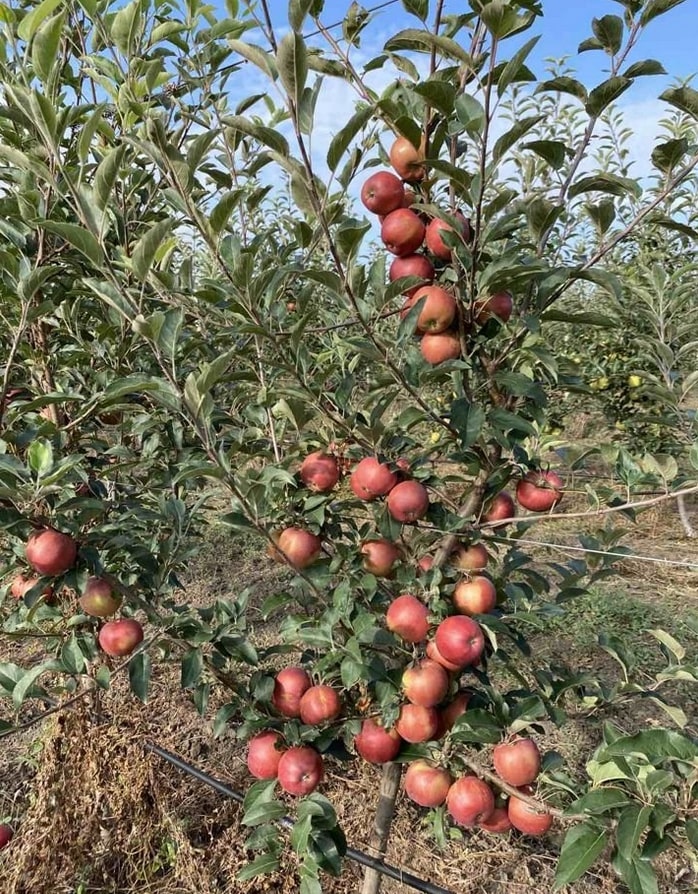
Turnkey business in Crimea

29900 hectares of arable land in one location

15 hectares of land in the Crimean peninsula
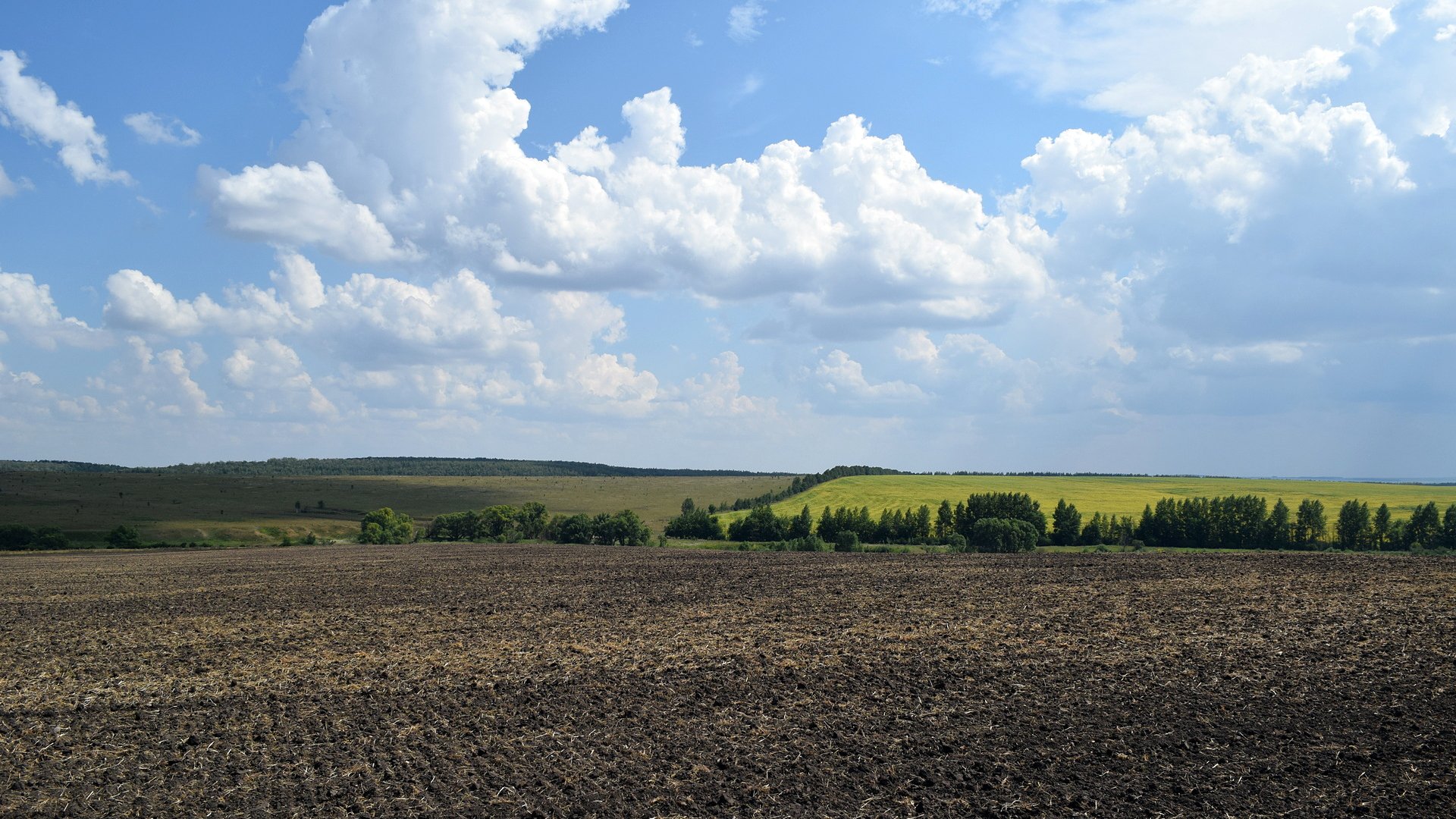
Land 1750 hectares of black soil for rent
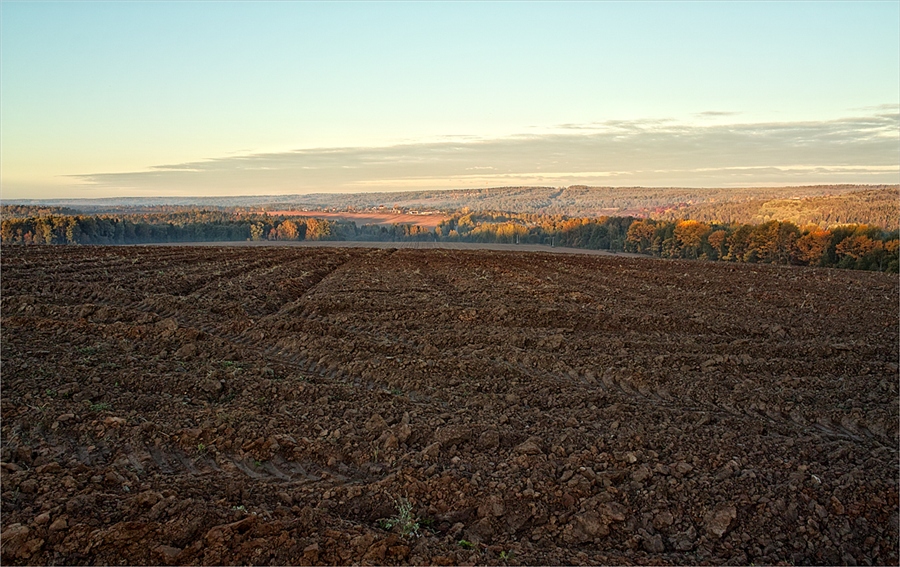
1406 hectares of land for rent in Siberia for growing crops
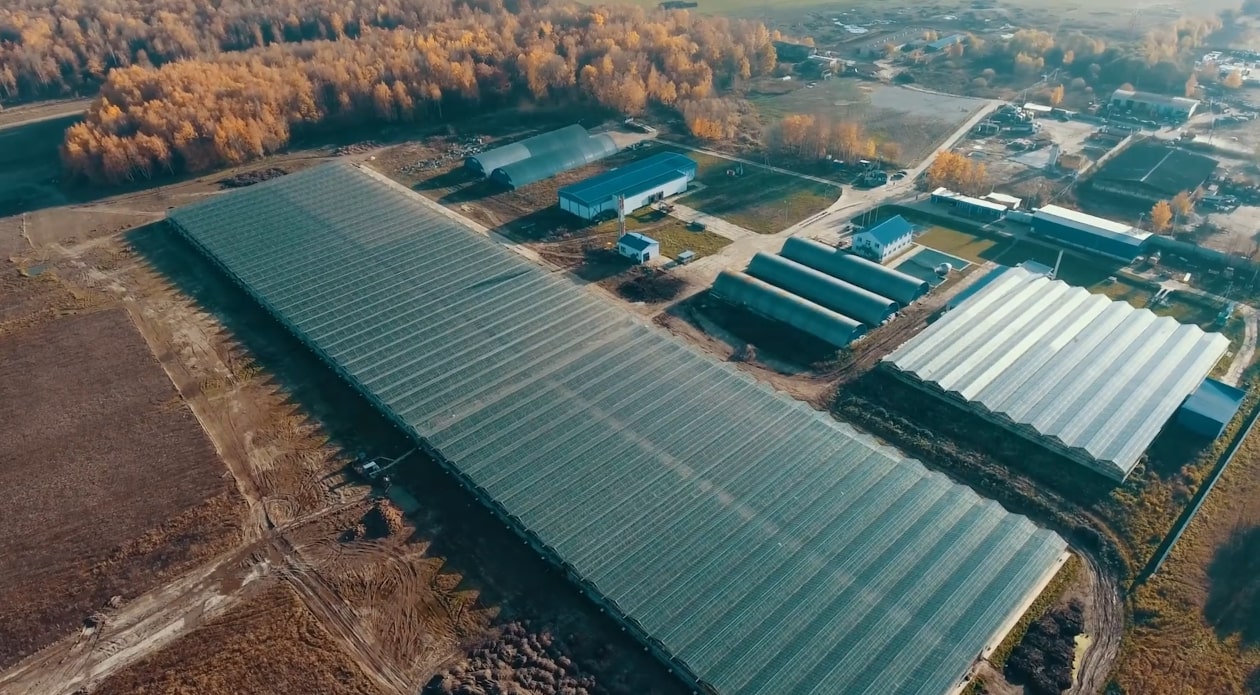
Winter greenhouse for rent near Moscow
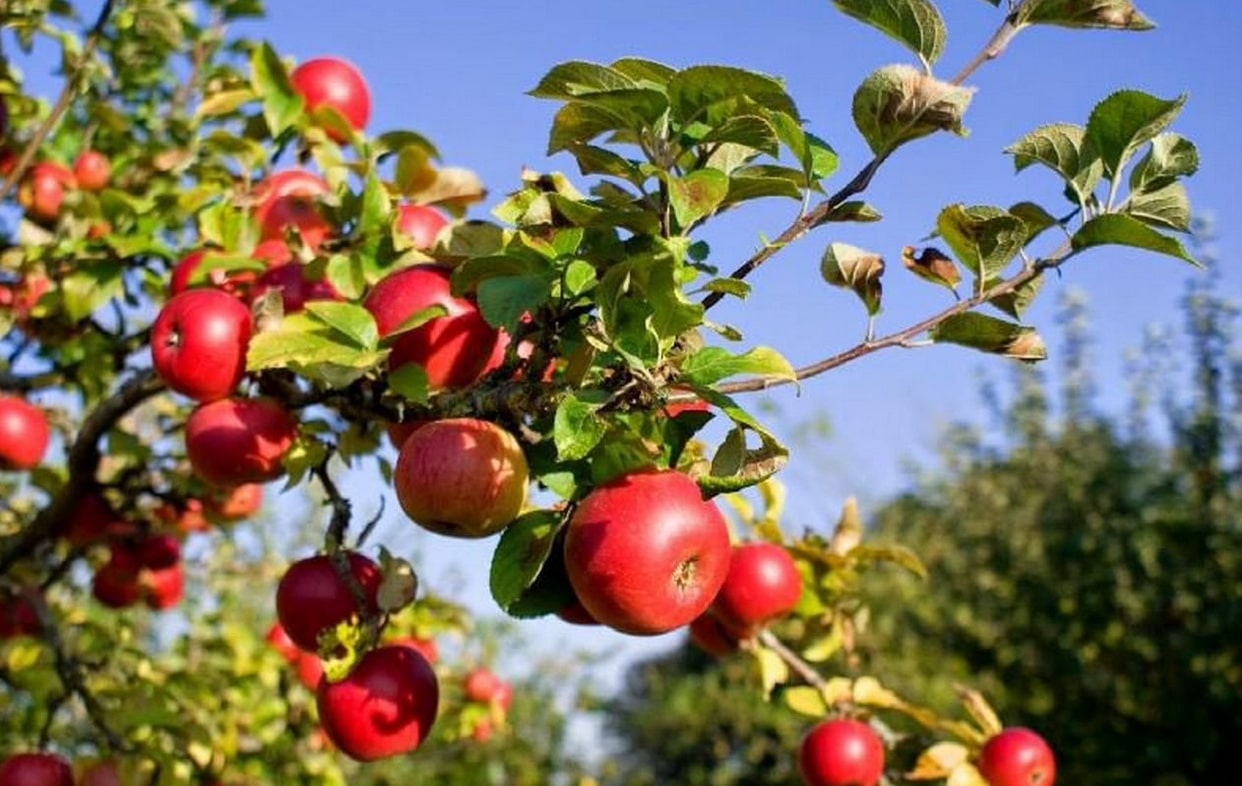
Apple orchard 55 hectares in Krasnodar
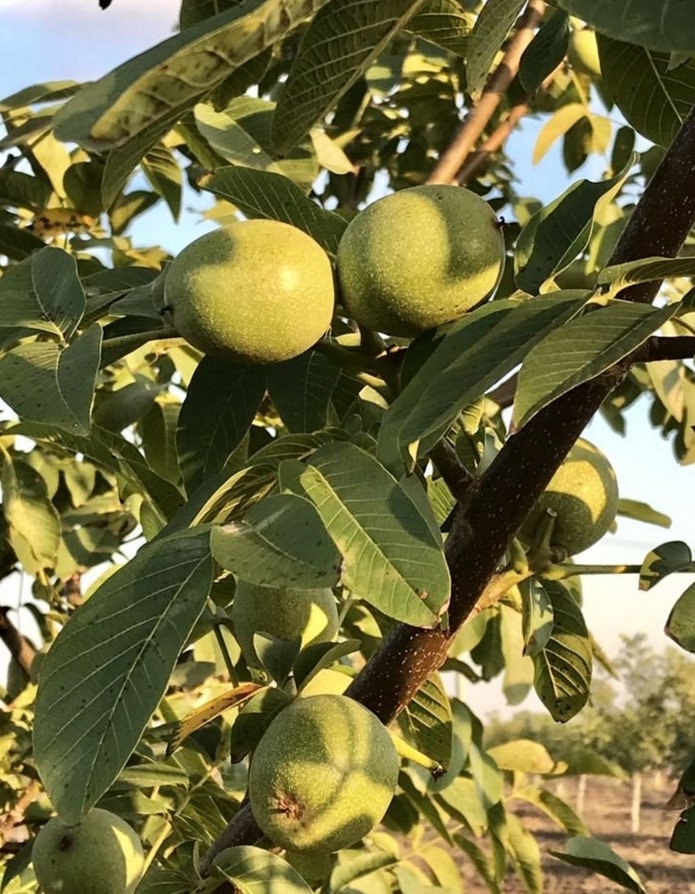
Nut orchard 48 hectares in Krasnodar

11 hectares of land in Altai for a residence for foreigners
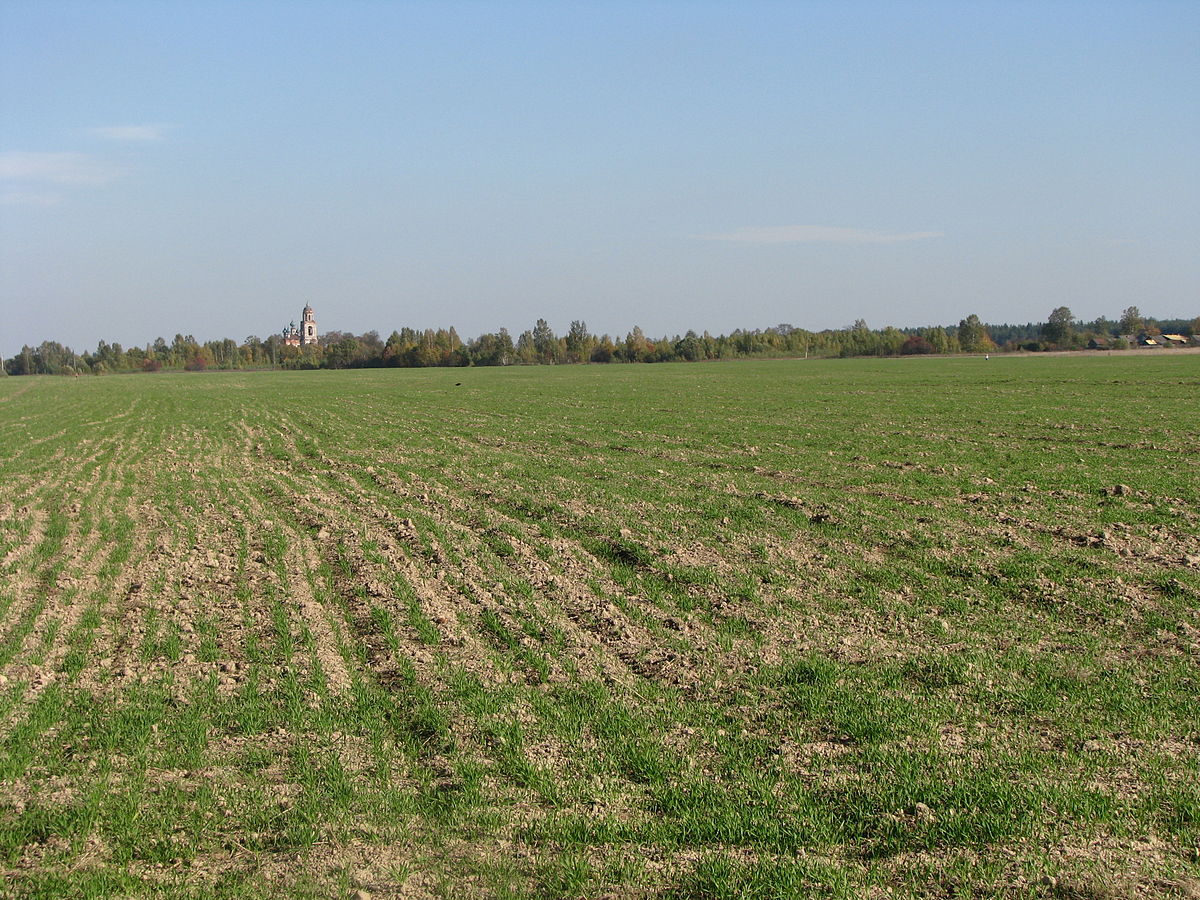
1150 hectares of land near the river for growing vegetables

Modern dairy farm for 1200-3600 heads with new equipment
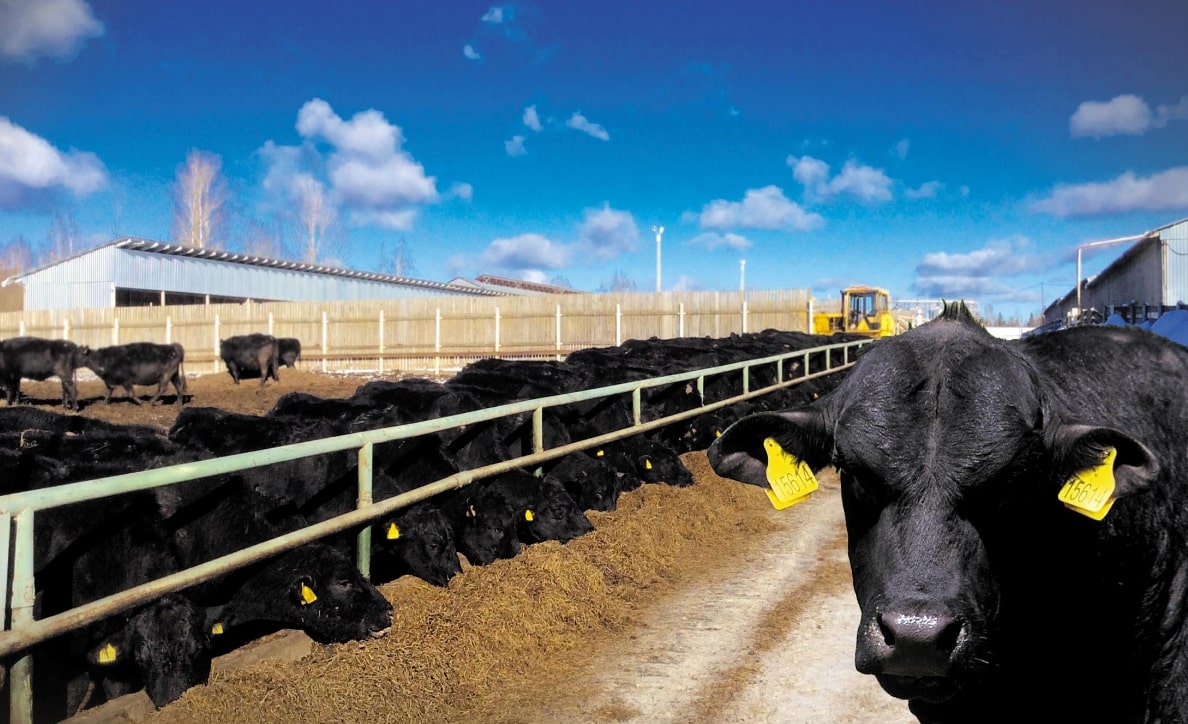
Meat farm 13500 hectares near Moscow

461 hectares of land for rent 70 km from Moscow

1410 hectares of land with buildings and equipment

3478 hectares for growing wheat
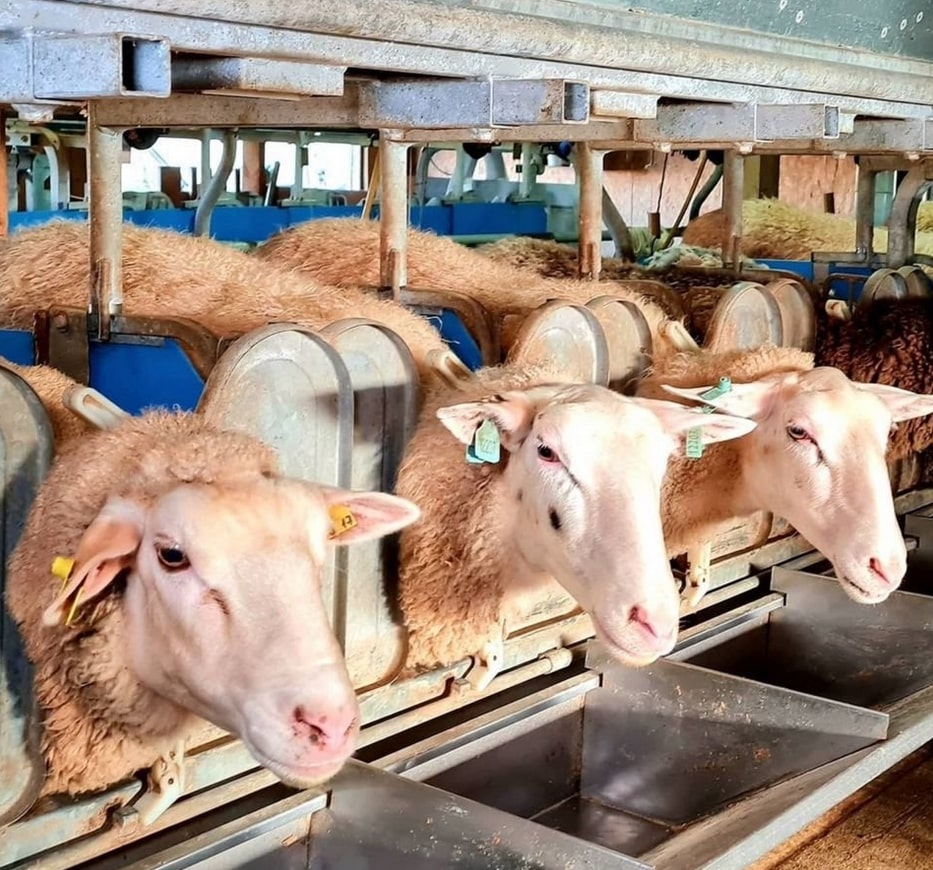
Dairy and meat farm with a cheese dairy

Recreation center in Altai for receiving tourists
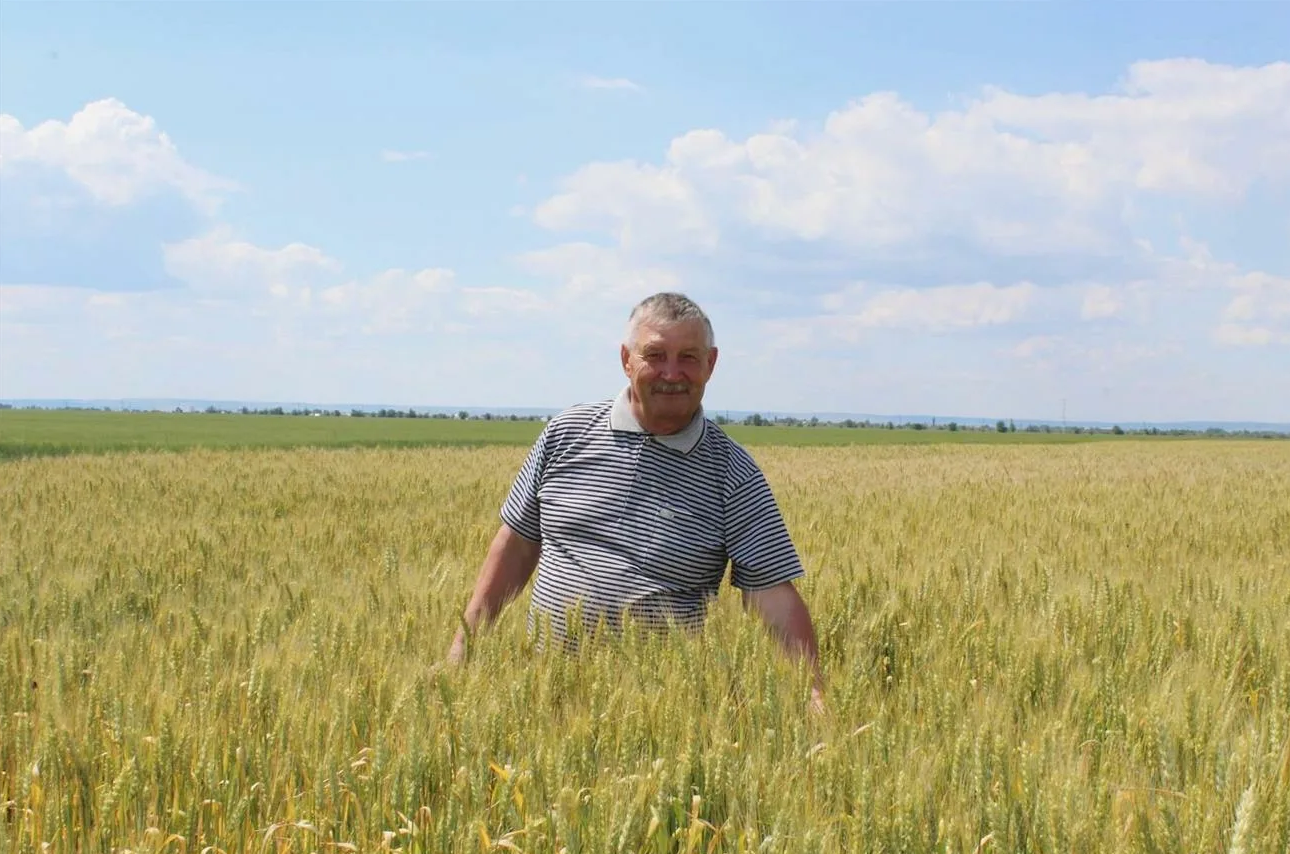
1350 hectares of agricultural land for wheat
Agricultural land in russia.

Welcome to the Russian Land Broker Company website! Our team of experts solves any tasks of foreign investors and helps foreign farmers to buy Russian agricultural land for developing their business in Russia.
We will find you a land of any size, suitable for any type of business and provide full legal support of land real estate purchasing in Russia. We will verify the documents of the land owner and register your business in accordance with Russian laws. We will also assist in finding ready-made farms in Russia with buildings and warehouses. We will solve your tasks on selling your products on a local market and their export.
Land in Siberia
Russia is an ideal country for farming business, mostly because the land is still very cheap. Foreigners have already purchased about 5 million hectares of agricultural land in Russia, and there are many reasons for this:

the cost of 1 acre of Russian land is several times cheaper than the price of 1 acre in South America or even in Africa;
Government provides significant grants for farmers, and you can count on them too;, farmland in russia is more fertile than in africa or china;, there are no frequent droughts in russia and no lack of access to water;, population of russia is more educated than people living in africa, there are no problems with hiring local experts;, russia has no problems with logistics; infrastructure and transportation system are well developed, there are many roads and seaports in the country..
Considering the demand for land among farmers and agricultural holding companies, the price of land in Russia will increase by approximately 15-20%. That’s why it’s better to buy land in Russia today making it a great investment in the future.

Farms in Russia
Each Russian consumes 77 kilograms of meat and 250 kilograms of dairy annually. Dairy farming in Russia meets about 80% of the needs of the country. Due to it, no external factors, like war, international sanctions and trade embargoes, can make a significant influence on providing people with this kind of product. Your investments in dairy farming would be bringing you 15-25% of profit.
On average, farmers harvest 2.5 tons of wheat per one hectare of land in Russia, and in the southern regions of the country one hectare is giving 6 tons of wheat. Farmers harvest 12-20 tons of hay (alfalfa) per one hectare of Russian land.
There are plenty of million cities in Russia, and you will be able to send your products for sale there. Road infrastructure and logistics are highly developed in Russia. Tax for farmers in Russia only 6%.
You need to tell the experts of our company about the goals and scale of the business you’re planning to start in Russia. Considering specifics and individual features of your business we will find a farm for you in the most suitable region of Russia.
We live in the biggest country in the world, and in every region soil composition is different. In addition to this, climat conditions vary too. It’s also important to consider a level of road infrastructure and to study the local consumer market.
For example, there is plenty of good land in Siberia for agribusiness, but infrastructure is poor when compared to western part of Russia. The most expensive farmland can be found in Krasnodar Krai and Rostov Oblast (south-west of the country); here the farmers harvest the biggest amount of wheat for export. Also, buying land if you’re a foreigner is prohibited by law in several regions of the country.
The problem that customer can face is a correct legal registration and transaction support. You should know that there are several restrictions and conditions for foreigners who want to buy a property in Russia.
How can foreigners buy land in Russia?
The Russian Land Broker Company exists for working with English-speaking foreigners. Our team consists of experts with huge experience in different spheres: agronomists, lawyers, real estate agents.
Choose farmland
Register companies, taxation system, organizational matters, easy negotiations, printed manual, ask a question, send a request.
Norway reports outbreak of bluetongue disease in sheep, WOAH says
- Medium Text
Sign up here.
Reporting by Sybille de La Hamaide; Editing by Gus Trompiz and Mark Potter
Our Standards: The Thomson Reuters Trust Principles. , opens new tab

Couche-Tard asks Seven & i for talks after $38.5 billion offer rejected
Canada's Alimentation Couche-Tard said on Sunday it was willing to engage in confidential discussions with Japanese retail giant Seven & i Holdings on its $38.5 billion takeover offer, as it remains keen on pursuing a buyout.


COMMENTS
A well-considered business plan is an essential part of operating any business, and sheep production is no different. Your sheep farm plan should include a clear set of goals, a firm grasp of flock management fundamentals, and the marketplace in which you plan to sell your breeding stock, meat, wool, and (if applicable) dairy products.
A Sample Sheep Farming Business Plan Template. 1. Industry Overview. Sheep farmers primarily raise or fatten sheep and lambs for their wool, meat, milk or sale to other farmers. Meat derived from these animals is separated into two categories, which include lamb and mutton. Lamb is meat from sheep less than one year old, while mutton refers to ...
Step 1: Business Plan. Regardless of the size of your sheep farm, you must craft a business plan. Your sheep farming business plan must consist of a financial analysis, marketing strategy, and income revenue calculations. Here is a breakdown of the key components to include in your sheep business plan:
Startup budget for a sheep farm. Part of your business plan should cover the rough numbers involved in getting your business going. This is particular to each business, but a few large capital expenditures universal to sheep farmers are: The cost of your sheep (for a rough number, assume around $400 per sheep) The cost of your sheep barn or ...
The projected P&L statement. The projected P&L statement for a sheep farm shows how much revenue and profit your business is expected to make in the future. A healthy sheep farm's P&L statement should show: Sales growing at (minimum) or above (better) inflation. Stable (minimum) or expanding (better) profit margins.
Sheep farming is a versatile and potentially profitable agricultural venture, offering multiple revenue streams through meat, wool, and dairy products. Crafting a comprehensive business plan for sheep farming is essential for setting clear objectives, securing financing, and ensuring efficient farm management.
Step 1: Write a Business Plan. Creating a solid business plan is a critical step in starting your sheep farming business. Your business plan should outline your goals, strategies, and financial projections. This plan will serve as a roadmap for your business, helping you stay focused and on track.
Usually an adult sheep requires about 10- 20 squire feet floor space. For example, if you intend to raise 10-15 sheep, then you have to make a house measuring 10 feet long and 20 feet wide. Keep the roof at least 6 feet high from the floor. Make good ventilation system. Always try to keep the house clean and dry.
According to a recent study by the National Sheep Industry Improvement Center, the average cost for obtaining all necessary permits and licenses for a small-scale sheep farming operation in the United States is around $5,000 to $10,000. This investment upfront can help ensure the long-term viability and success of your sheep farming business.
Launching a successful sheep farming business requires meticulous planning and preparation. Before crafting your comprehensive business plan, it's crucial to assess your skills, research the market, and address key financial and legal considerations.This concise checklist outlines the 9 essential steps to take, ensuring you've covered all the bases and set your sheep farm up for long-term success.
Dive into the world of sheep farming with our comprehensive guide designed specifically for beginners! Whether you're looking to start a small-scale farm or ...
Starting Sheep Farming Business Plan (PDF) Sheep farming is a very lucrative business to start. Sheep farming business involves breeding, raising sheep and selling wool, lamb and mutton. A sheep farming business can thrive in various environments. This is because sheep are a hardy flock that adapts easily to varied conditions and are generally ...
Year 1, I worked about 1000 hours to build my farm business and grossed about $0. Year 2, I worked another 1000 hours to build my farm business and grossed about $10,000. That's like a dollar an hour. Year 3, I worked about 1000 hours on my farm business and grossed about $100K. There were a lot of times I wanted to QUIT.
19 Steps to Starting Sheep Farming Business. 1. Understand the Industry. The sheep and wool industry is considered to be in a long-term decline due to decreasing inventories, farm numbers and shrinking revenues. The rate of return that the industry has experienced has resulted in instability.
Raising sheep for profit is possible on both small acreage-farms and much larger enterprises. Profitability can be challenging, but with productive sheep and close control of expenses, it is possible to make your operation efficient. Successful marketing of sheep products is also critical for a profitable sheep operation.
Written October 2019 Revised April 2020. Example Beginning Farmer Business Plan. The goal of this document is to serve as a sample business plan for an early stage farm business. In this example, the farmers are preparing to finance a new farm purchase. After leasing land and growing their markets for three years they are ready to start ...
Success in sheep farming business depends on good planning in advance, solid and continual management of the farm and also on keeping a record of everything. Commercial sheep farming business can actually be a great source of income and employment. Starting in a small scale and expanding gradually will be good.
Today, we discuss the sheep farming business plan in India along with sheep farm management, sheep feeding methods, and sheep housing basics for maximum profits. Sheep farming business is the raising and breeding of domestic sheep. Sheep farming is a branch of animal husbandry. Sheep are raised mainly for their meat (lamb and mutton), milk ...
This business plan outlines the details for starting a sheep farming operation. The plan discusses producing wool and marketing lamb meat. Key aspects covered include choosing appropriate sheep breeds, housing and equipment needs, breeding and lambing practices, feeding and health management. Operational strategies around the production cycle are addressed. The marketing section analyzes ...
Department of Agricultural Economics & Rural Sociology. E. J. Iddings Agricultural Science Laboratory, Rm 39 606 S Rayburn St. College of Agricultural & Life Sciences. Idaho AgBiz. Livestock Budgets.
Land for Sale in Russia & Farms
An on-farm apprenticeship at SkyLines Farm is a terrific way to get hands-on, real-life experience in the mechanics and the business of raising sheep by organic and sustainable methods and successfully direct-marketing their products. Whether you're a shepherd already, or just investigating sheep as a possible venture, an apprenticeship at ...
PARIS, Sept 6 (Reuters) - Norway has reported an outbreak of bluetongue disease on a sheep farm in the southern part of the country, the World Organisation for Animal Health (WOAH) said on Friday.
Moscow, ID Small Farms for Sale